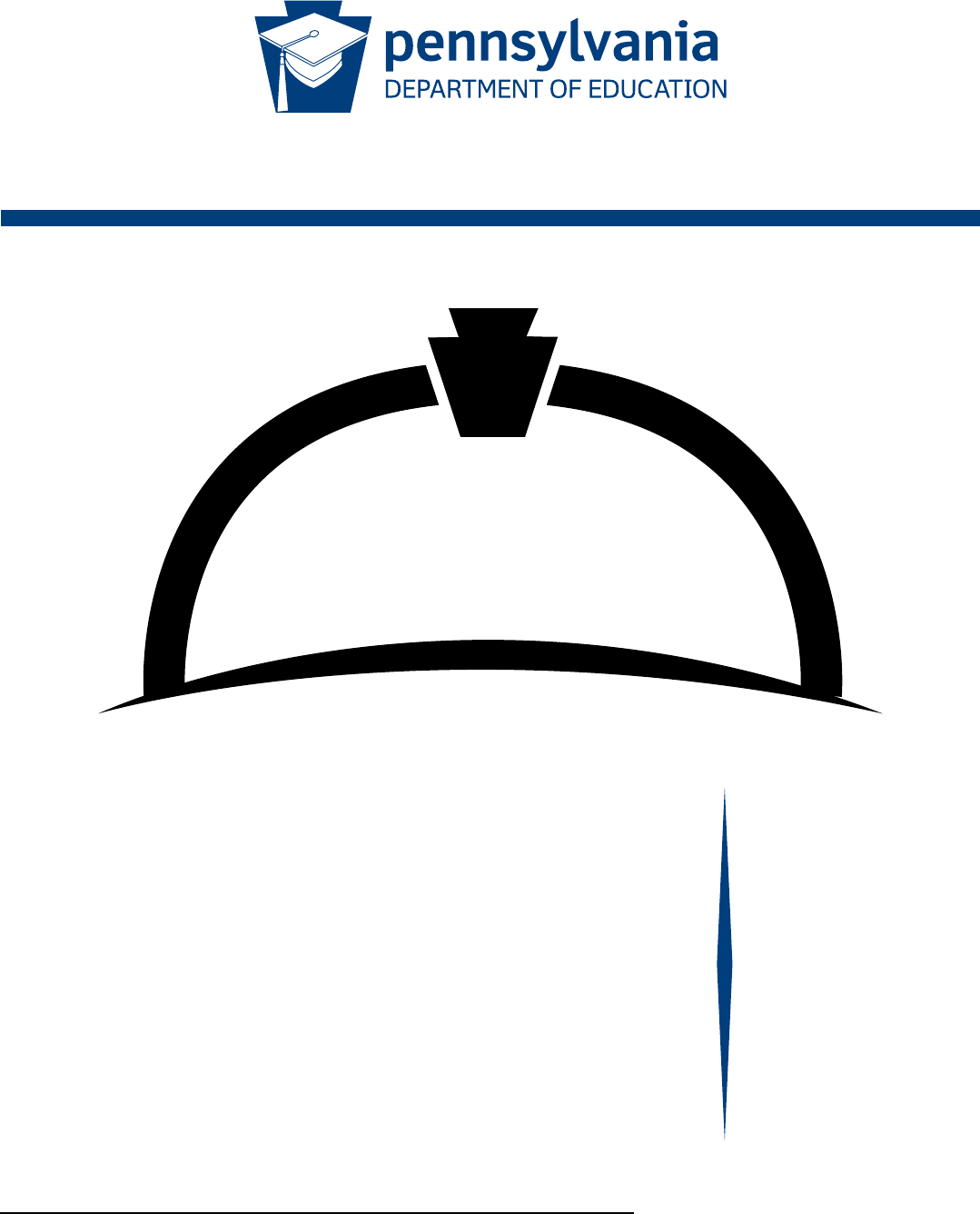
Pennsylvania
Keystone Exams
*
This is a revised version of the 2017 Item and Scoring Sampler.
2021*
Pennsylvania Department of Education Bureau of Curriculum, Assessment and Instruction—September 2021
Biology
Item and Scoring Sampler

Pennsylvania Keystone Biology Item and Scoring Sampler—September 2021
ii
TABLE OF CONTENTS
INFORMATION ABOUT BIOLOGY
Introduction .................................................................1
About the Keystone Exams .....................................................1
Item and Scoring Sampler Format ................................................3
Biology Exam Directions .......................................................4
General Description of Scoring Guidelines for Biology ................................5
BIOLOGY MODULE 1
Multiple-Choice Items .........................................................6
Constructed-Response Item ...................................................20
Constructed-Response Item ...................................................32
Biology Module 1—Summary Data ..............................................44
BIOLOGY MODULE 2
Multiple-Choice Items ........................................................46
Constructed-Response Item ...................................................60
Constructed-Response Item ...................................................74
Biology Module 2—Summary Data ..............................................86

Pennsylvania Keystone Biology Item and Scoring Sampler—September 2021
1
INFORMATION ABOUT BIOLOGY
INTRODUCTION
The Pennsylvania Department of Education (PDE) provides districts and schools with tools to assist
in delivering focused instructional programs aligned to the Pennsylvania Standards (PS). These tools
include the standards, Assessment Anchor documents, Keystone Exams Test Definition, Classroom
Diagnostic Tool, Standards Aligned System, and content-based item and scoring samplers. This
2021 Biology Item and Scoring Sampler is a useful tool for Pennsylvania educators in preparing
students for the Keystone Exams.
This Item and Scoring Sampler contains released operational multiple-choice and constructed-
response items that have appeared on previously administered Keystone Exams. These items will
not appear on any future Keystone Exams. Released items provide an idea of the types of items that
have appeared on operational exams and that will appear on future operational Keystone Exams.
Each item has been through a rigorous review process to ensure alignment with the Assessment
Anchors and Eligible Content. This sampler includes items that measure a variety of Assessment
Anchor or Eligible Content statements, but it does not include sample items for all Assessment
Anchor or Eligible Content statements.
Typically an item and scoring sampler is released every year to provide students and educators
with a resource to assist in delivering focused instructional programs aligned to the PS. However,
due to the cancellation of standardized testing in 2019–2020, the 2021 Item and Scoring Sampler
is a revised version of the previously released 2017 Item and Scoring Sampler. This revised version
ensures that students and educators have an enhanced item and scoring sampler to use during
instruction and/or preparation of students to take the Keystone Exam.
The items in this sampler may be used as examples for creating assessment items at the classroom
level and may be copied and used as part of a local instructional program.
1
Classroom teachers
may find it beneficial to have students respond to the constructed-response items in this sampler.
Educators can then use the sampler as a guide to score the responses either independently or
together with colleagues.
This Item and Scoring Sampler is available in Braille format. For more information regarding Braille,
call (717)-901-2238.
ABOUT THE KEYSTONE EXAMS
The Keystone Exams are end-of-course assessments currently designed to assess proficiencies
in Algebra I, Biology, and Literature. For detailed information about how the Keystone Exams are
being integrated into the Pennsylvania graduation requirements, please contact the Pennsylvania
Department of Education or visit the PDE website at http://www.education.pa.gov.
1
The permission to copy and/or use these materials does not extend to commercial purposes.

Pennsylvania Keystone Biology Item and Scoring Sampler—September 2021
2
INFORMATION ABOUT BIOLOGY
Alignment
The Biology Keystone Exam consists of questions grouped into two modules: Module 1—Cells and
Cell Processes and Module 2—Continuity and Unity of Life. Each module corresponds to specific
content, aligned to statements and specifications included in the course-specific Assessment
Anchor documents. The Biology content included in the Keystone Biology multiple-choice questions
will align with the Assessment Anchors as defined by the Eligible Content statements. The process
skills, directives, and action statements will also specifically align with the Assessment Anchors as
defined by the Eligible Content statements.
The content included in Biology constructed-response items aligns with content included in the
Eligible Content statements. The process skills, directives, and action statements included in the
performance demands of the Biology constructed-response items align with specifications included
in the Assessment Anchor statements, the Anchor Descriptor statements, and/or the Eligible Content
statements. In other words, the verbs or action statements used in the constructed-response items
or stems can come from the Eligible Content, Anchor Descriptor, or Assessment Anchor statements.
Depth of Knowledge
Webb’s Depth of Knowledge (DOK) was created by Dr. Norman Webb of the Wisconsin Center for
Education Research. Webb’s definition of DOK is the cognitive expectation demanded by standards,
curricular activities, and assessment tasks. Webb’s DOK includes four levels, from the lowest (recall)
level to the highest (extended thinking) level.
Depth of Knowledge
Level 1 Recall
Level 2 Basic Application of Skill/Concept
Level 3 Strategic Thinking
Level 4 Extended Thinking
Each Keystone item has been through a rigorous review process and is assigned a DOK level. For
additional information about DOK, please visit the PDE website at http://static.pdesas.org/content/
documents/Keystone_Exams_Understanding_Depth_of_Knowledge_and_Cognitive_Complexity.pdf.
Exam Format
The Keystone Exams are delivered in a paper-and-pencil format as well as in a computer-based
online format. The multiple-choice questions require students to select the best answer from four
possible answer options and record their answers in the spaces provided. The correct answer for
each multiple-choice question is worth onepoint. The constructed-response items require students
to develop and write (or construct) their responses. Constructed-response items in Biology are
scored using item-specific scoring guidelines based on a 0–3-point scale. Each multiple-choice
question is designed to take about one minute to one and a half minutes to complete. Each
constructed-response item is designed to take about eight minutes to complete. The estimated
time to respond to a test question is the same for both test formats. During an actual exam
administration, students are given additional time as necessary to complete the exam.

Pennsylvania Keystone Biology Item and Scoring Sampler—September 2021
3
INFORMATION ABOUT BIOLOGY
ITEM AND SCORING SAMPLER FORMAT
This sampler includes the test directions and scoring guidelines that appear in the Keystone Exams.
Each sample multiple-choice question is followed by a table that includes the alignment, the answer
key, the DOK, the percentage
2
of students who chose each answer option, and a brief answer option
analysis or rationale. Each constructed-response item is followed by a table that includes the item
alignment, the DOK, and the mean student score. Additionally, each of the included item-specific
scoring guidelines is combined with sample student responses representing each score point to
form a practical, item-specific scoring guide. The General Description of Scoring Guidelines for
Biology used to develop the item-specific scoring guidelines should be used if any additional item-
specific scoring guidelines are created for use within local instructional programs.
Example Multiple-Choice Item Information Table
Item Information
Alignment Assigned AAEC
Answer Key Correct Answer
Depth of Knowledge Assigned DOK
p-value A Percentage of students who selected this option
p-value B Percentage of students who selected this option
p-value C Percentage of students who selected this option
p-value D Percentage of students who selected this option
Option Annotations Brief answer option analysis or rationale
Example Constructed-Response Item Information Table
Alignment
Assigned
AAEC
Depth of Knowledge
Assigned
DOK
Mean Score
2
All p-value percentages listed in the item information tables have been rounded.

Pennsylvania Keystone Biology Item and Scoring Sampler—September 2021
4
INFORMATION ABOUT BIOLOGY
BIOLOGY EXAM DIRECTIONS
Directions:
Below are the exam directions available to students. These directions may be used to help students
navigate through the exam.
On the following pages of this test booklet are the Keystone Biology Exam questions for Module 1
[or Module2].
There are two types of questions in this module.
Multiple-Choice Questions:
These questions will ask you to select an answer from among four choices.
• Read each question, and choose the correct answer.
• Only one of the answers provided is correct.
• Record your answer in the Biology answer booklet.
Constructed-Response Questions:
These questions will require you to write your response.
• Be sure to read the directions carefully.
• You cannot receive the highest score for a constructed-response question without
following all directions.
• If the question asks you to do multiple tasks, be sure to complete all tasks.
• If the question asks you to explain, be sure to explain. If the question asks you to
analyze, describe, or compare, be sure to analyze, describe, or compare.
• All responses must be written in the appropriate location within the response box in the
Biology answer booklet. If you use scratch paper to write your draft, be sure to transfer
your final response to the Biology answer booklet.
In addition, a module may also include scenarios. A scenario contains text, graphics, charts, and/
or tables describing a biological concept, an experiment, or other scientific research. You can use
the information contained in a scenario to answer certain exam questions. Before responding to any
scenario questions, be sure to study the entire scenario and follow the directions for the scenario.
You may refer back to the scenario at any time when answering the scenario questions.
If you finish early, you may check your work in Module 1 [or Module 2] only.
• Do not look ahead at the questions in Module 2 [or back at the questions in Module 1] of
your exam materials.
• After you have checked your work, close your exam materials.
You may refer to this page at any time during this portion of the exam.

Pennsylvania Keystone Biology Item and Scoring Sampler—September 2021
5
INFORMATION ABOUT BIOLOGY
GENERAL DESCRIPTION OF SCORING GUIDELINES FOR BIOLOGY
3 Points
• The response demonstrates a thorough understanding of the scientific content, concepts,
and/or procedures required by the task(s).
• The response provides a clear, complete, and correct response as required by the task(s).
The response may contain a minor blemish or omission in work or explanation that does not
detract from demonstrating a thorough understanding.
2 Points
• The response demonstrates a partial understanding of the scientific content, concepts,
and/or procedures required by the task(s).
• The response is somewhat correct with partial understanding of the required scientific
content, concepts, and/or procedures demonstrated and/or explained. The response may
contain some work that is incomplete or unclear.
1 Point
• The response demonstrates a minimal understanding of the scientific content, concepts,
and/or procedures required by the task(s).
• The response is somewhat correct with minimal understanding of the required scientific
content, concepts, and/or procedures demonstrated and/or explained. The response may
contain some work that is incomplete or unclear.
0 Points
• The response provides insufficient evidence to demonstrate any understanding of the
scientific content, concepts, and/or procedures as required by the task(s).
• The response may show only information copied or rephrased from the question or
insufficient correct information to receive a score of 1.

Pennsylvania Keystone Biology Item and Scoring Sampler—September 2021
6
1
BiologyMODULE1
BIOLOGY MODULE 1
MULTIPLE-CHOICE ITEMS
1. Which characteristic is shared by both prokaryotes and eukaryotes?
A. have organ systems
B. make their own food
C. contain genetic material
D. need oxygen gas to breathe
677970677970
Item Information
Alignment BIO.A.1.1.1
Answer Key C
Depth of Knowledge 2
p-value A 12%
p-value B 13%
p-value C 66% (correct answer)
p-value D 9%
Option Annotations A. All prokaryotes and some eukaryotes lack organ systems.
B. Only some prokaryotes (i.e., photosynthetic cyanobacteria and
chemosynthetic bacteria) and some eukaryotes (i.e., plants) make
their own food.
C. Key: Both prokaryotes and eukaryotes contain genetic material
(DNA).
D. Breathing involves organs called lungs, which are present in some
eukaryotes.
6767

Pennsylvania Keystone Biology Item and Scoring Sampler—September 2021
7
1
BiologyMODULE1
2. Carbon can combine with many different elements but frequently combines with oxygen,
hydrogen, and nitrogen to form organic molecules. Which statement best explains why carbon
is able to form a large number of different molecules?
A. Carbon forms only ionic bonds.
B. Carbon can form only ring structures.
C. Carbon can form four covalent bonds.
D. Carbon forms small, simple structures.
674135674135
\\
Item Information
Alignment BIO.A.2.2.1
Answer Key C
Depth of Knowledge 2
p-value A 9%
p-value B 4%
p-value C 73% (correct answer)
p-value D 14%
Option Annotations A. Carbon forms covalent bonds, not ionic bonds.
B. Carbon can form long chain structures or ring structures.
C. Key: Carbon can form four covalent bonds with its four valence
electrons.
D. Carbon can form long chains or ring structures, as well as complex
branching structures with combinations of single, double, and triple
bonds.
6767

Pennsylvania Keystone Biology Item and Scoring Sampler—September 2021
8
1
BiologyMODULE1
3. Which statement correctly describes how a protein is formed?
A. A monosaccharide bonded to a side chain is broken apart.
B. Amino acids are bonded together in a long chain to form a new molecule.
C. A molecule containing glycerol bonded to three fatty acids is broken apart.
D. A nitrogenous base, a sugar, and a phosphate group combine to form a new molecule.
642850642850
Item Information
Alignment BIO.A.2.2.2
Answer Key B
Depth of Knowledge 2
p-value A 4%
p-value B 58% (correct answer)
p-value C 9%
p-value D 29%
Option Annotations A. Removing a monosaccharide from a side chain results in the freeing
of a simple sugar from a molecule, not the formation of a protein.
B. Key: A series of condensation reactions between amino acids
eventually results in the formation of a polypeptide that, once
folded, is a protein.
C. Removing glycerol from three fatty acids describes the breakdown
of a triglyceride.
D. The combination of a nitrogenous base, a sugar, and a phosphate
group results in the formation of a nucleotide, a monomer of a
nucleic acid.

Pennsylvania Keystone Biology Item and Scoring Sampler—September 2021
9
1
BiologyMODULE1
4. Use the chart below to answer the question.
Biological Molecule Information
Molecule Structure Cellular Use
1
a molecule made mostly of carbon
with two nonpolar chains and a polar
head
is a component of
plasma membranes
2
a polar molecule made of repeating
units of sugar bonded to a phosphate
and a nitrogenous base
stores genetic
information
Which biological molecules are most likely represented by molecules 1 and 2?
A. molecule 1: lipid
molecule 2: nucleic acid
B. molecule 1: lipid
molecule 2: protein
C. molecule 1: carbohydrate
molecule 2: nucleic acid
D. molecule 1: carbohydrate
molecule 2: protein
Item Information
Alignment BIO.A.2.2.3
Answer Key A
Depth of Knowledge 2
p-value A 48% (correct answer)
p-value B 17%
p-value C 23%
p-value D 12%
Option Annotations A. Key: Lipids are key components of the plasma membrane, and
a nucleic acid is characterized by its ability to store genetic
information.
B. Molecule 2 is not a protein because proteins are composed of
amino acids.
C. Molecule 1 is not a carbohydrate because membrane lipids, not
carbohydrates, have polar and nonpolar ends.
D. Molecule 1 is not a carbohydrate because carbohydrates are polar,
and molecule 2 is not a protein because proteins are composed of
amino acids.

Pennsylvania Keystone Biology Item and Scoring Sampler—September 2021
10
1
BiologyMODULE1
5. Which action must occur for an enzyme to catalyze a chemical reaction?
A. A competitive inhibitor must first bind to an active site.
B. A substrate must bind to an active site of the enzyme.
C. A substrate must bind to an allosteric site of the enzyme.
D. A noncompetitive inhibitor must first bind to an active site.
674139674139
Item Information
Alignment BIO.A.2.3.1
Answer Key B
Depth of Knowledge 2
p-value A 14%
p-value B 65% (correct answer)
p-value C 11%
p-value D 10%
Option Annotations A. A competitive inhibitor prevents binding at the active site of an
enzyme.
B. Key: A substrate must bind to an enzyme’s active site to be
properly positioned for the enzyme to catalyze a chemical reaction.
C. Non-substrate molecules use the allosteric site of an enzyme.
D. A noncompetitive inhibitor reduces the enzyme’s functional
efficiency.
6767

Pennsylvania Keystone Biology Item and Scoring Sampler—September 2021
11
1
BiologyMODULE1
6. Lipase is an enzyme that breaks down lipids in the digestive system of humans. It functions
best at a pH range of 4.0 to 5.0. When a person takes an antacid tablet to relieve heartburn,
the antacid increases the pH to around 7 in certain areas of the digestive system. Which initial
effect would most likely be caused by a change in pH?
A. More lipids would be digested.
B. Fewer lipids would be digested.
C. The production of lipase molecules would increase.
D. The production of lipase molecules would decrease.
677984677984
Item Information
Alignment BIO.A.2.3.2
Answer Key B
Depth of Knowledge 2
p-value A 20%
p-value B 36% (correct answer)
p-value C 24%
p-value D 20%
Option Annotations A. Fewer, not more, lipids would be digested at a nonoptimal pH
of7.0.
B. Key: Lipid digestion decreases outside of the optimal pH range
of4.0 to 5.0.
C. Lipase production occurs in cells independent of lipase function in
digestion.
D. Lipase production occurs in cells independent of lipase function in
digestion.
6767

Pennsylvania Keystone Biology Item and Scoring Sampler—September 2021
12
1
BiologyMODULE1
7. Use the lists below to answer the question.
Cell Structures Observed in TwoOrganisms
Cell StructuresinOrganism1 Cell StructuresinOrganism2
• cellwall
• endoplasmic
reticulum
• Golgibody
•chloroplasts
•mitochondria
• nucleus
• ribosomes
• vacuole
• cell membrane
• endoplasmic
reticulum
• Golgi body
• mitochondria
• nucleus
• ribosomes
A student made lists of structures observed in cells from two different organisms. Which
statement describes the most likely difference in the way that organism 1 and organism 2
obtain energy?
A. Only organism 1 uses solar energy to make energy-rich compounds.
B. Only organism 1 stores solar energy until it is needed for its life processes.
C. Only organism 2 produces molecules for long-term energy storage.
D. Only organism 2 transforms food energy into ATP during cellular respiration.
678965678965
Item Information
Alignment BIO.A.3.1.1
Answer Key A
Depth of Knowledge 2
p-value A 46% (correct answer)
p-value B 21%
p-value C 10%
p-value D 23%
Option Annotations A. Key: Organism 1 has chloroplasts, which are used to convert solar
energy into chemical energy.
B. Neither organism 1 nor 2 has the capacity to store solar energy.
C. The endoplasmic reticulum, present in organisms 1 and 2, is
associated with the production of lipids for long-term energy
storage.
D. Mitochondria, present in organisms 1 and 2, perform cellular
respiration.
6767

Pennsylvania Keystone Biology Item and Scoring Sampler—September 2021
13
1
BiologyMODULE1
8. A cell in the leaf of a green plant performs both photosynthesis and cellular respiration, often
at the same time. Which statement best describes how these processes are related to each
other?
A. Both processes produce carbon dioxide.
B. Both processes require energy directly from the Sun.
C. Products of one process are used as some of the reactants for the other process.
D. Thermal energy from one process is used as the energy source for the other process.
677989677989
Item Information
Alignment BIO.A.3.2.1
Answer Key C
Depth of Knowledge 2
p-value A 8%
p-value B 25%
p-value C 58% (correct answer)
p-value D 9%
Option Annotations A. Only cellular respiration produces carbon dioxide.
B. Only photosynthesis requires energy directly from the Sun.
C. Key: Photosynthesis uses carbon dioxide produced during cellular
respiration, and cellular respiration uses oxygen produced during
photosynthesis.
D. Solar energy is used during photosynthesis, and glucose is used in
cellular respiration.
6767

Pennsylvania Keystone Biology Item and Scoring Sampler—September 2021
14
1
BiologyMODULE1
9. A scientist observed that during the course of a chemical reaction the number of ATP molecules
was reduced. What did the scientist most likely learn from the observation?
A. The reaction produced water.
B. The reaction consumed water.
C. The reaction caused an output of energy.
D. The reaction required an input of energy.
642329642329
Item Information
Alignment BIO.A.3.2.2
Answer Key D
Depth of Knowledge 2
p-value A 7%
p-value B 10%
p-value C 39%
p-value D 44% (correct answer)
Option Annotations A. The formation of ATP produces water.
B. Many processes within a cell can release or consume water.
C. Reactions that result in fewer ATP consume energy.
D. Key: ATP is the energy currency of the cell and is used to fuel
reactions.
6767

Pennsylvania Keystone Biology Item and Scoring Sampler—September 2021
15
1
BiologyMODULE1
10. Which statement best describes how channel and carrier proteins in the plasma membrane
are similar?
A. Both allow for the flow of molecules into and out of a cell.
B. Both directly connect the membrane to the nucleus of a cell.
C. Both use energy to continuously move water molecules out of a cell.
D. Both cause the phospholipid bilayer to form a rigid membrane for a cell.
674080674080
Item Information
Alignment BIO.A.4.1.1
Answer Key A
Depth of Knowledge 2
p-value A 60% (correct answer)
p-value B 11%
p-value C 19%
p-value D 10%
Option Annotations A. Key: Channel and carrier proteins form pathways across the lipid
bilayer.
B. These proteins provide pathways across the lipid bilayer, not to the
nucleus.
C. All channel proteins and some carrier proteins move water without
energy.
D. These proteins create openings in the phospholipid bilayer, they do
not make it rigid.
6767
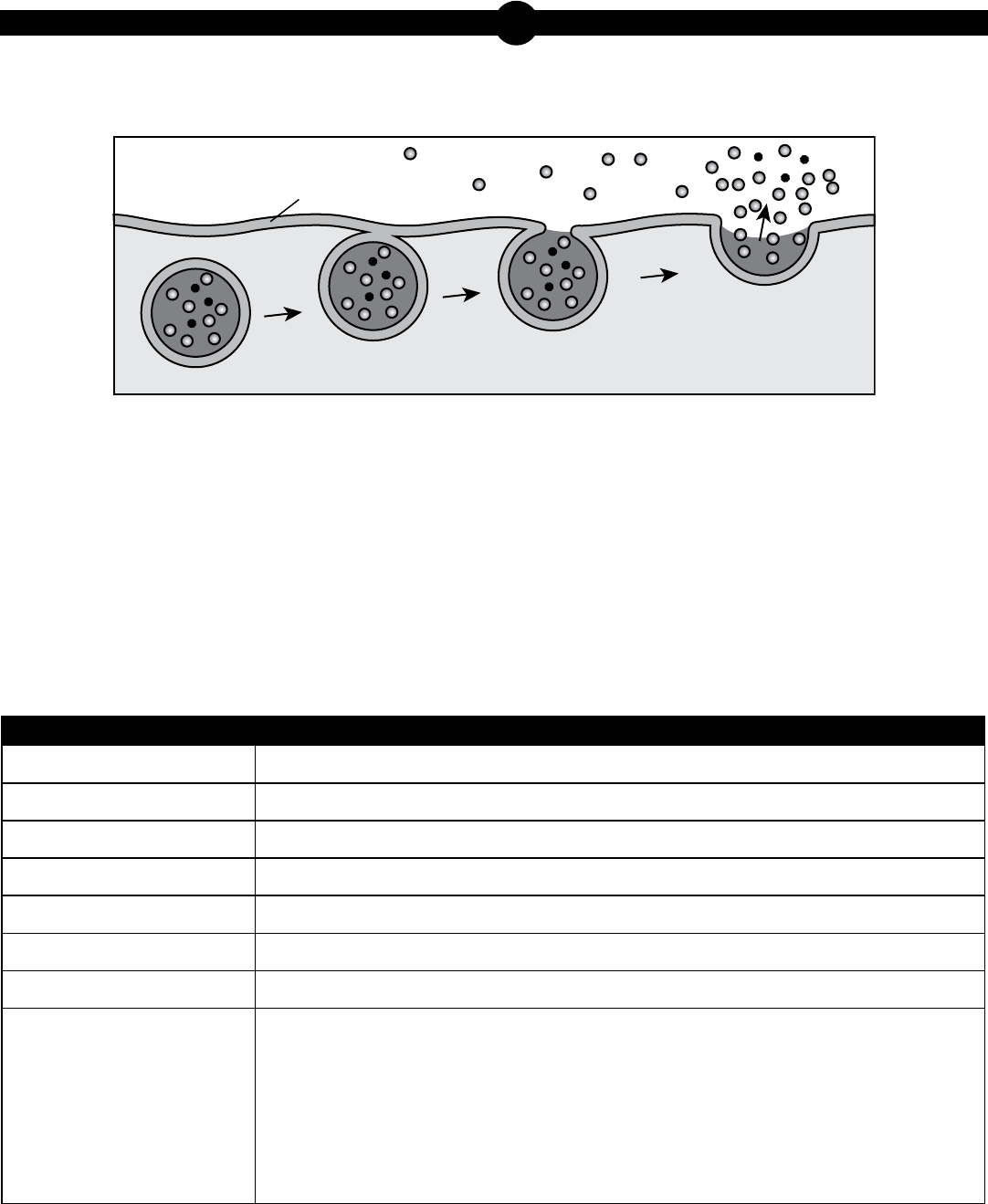
Pennsylvania Keystone Biology Item and Scoring Sampler—September 2021
16
1
BiologyMODULE1
11. Use the diagram below to answer the question.
Cell Process
outside of cell
inside of cell
cell membrane
Which cell process is best modeled by the diagram?
A. osmosis
B. exocytosis
C. passive transport
D. facilitated diffusion
681052681052
Item Information
Alignment BIO.A.4.1.2
Answer Key B
Depth of Knowledge 2
p-value A 8%
p-value B 49% (correct answer)
p-value C 26%
p-value D 17%
Option Annotations A. Osmosis is the movement of water across a cell membrane.
B. Key: During exocytosis, a vesicle fuses with the cell membrane,
releasing its contents outside of a cell.
C. Passive transport is the movement of materials down a
concentration gradient.
D. Facilitated diffusion is the passive transport of materials across a
cell membrane through channel proteins.
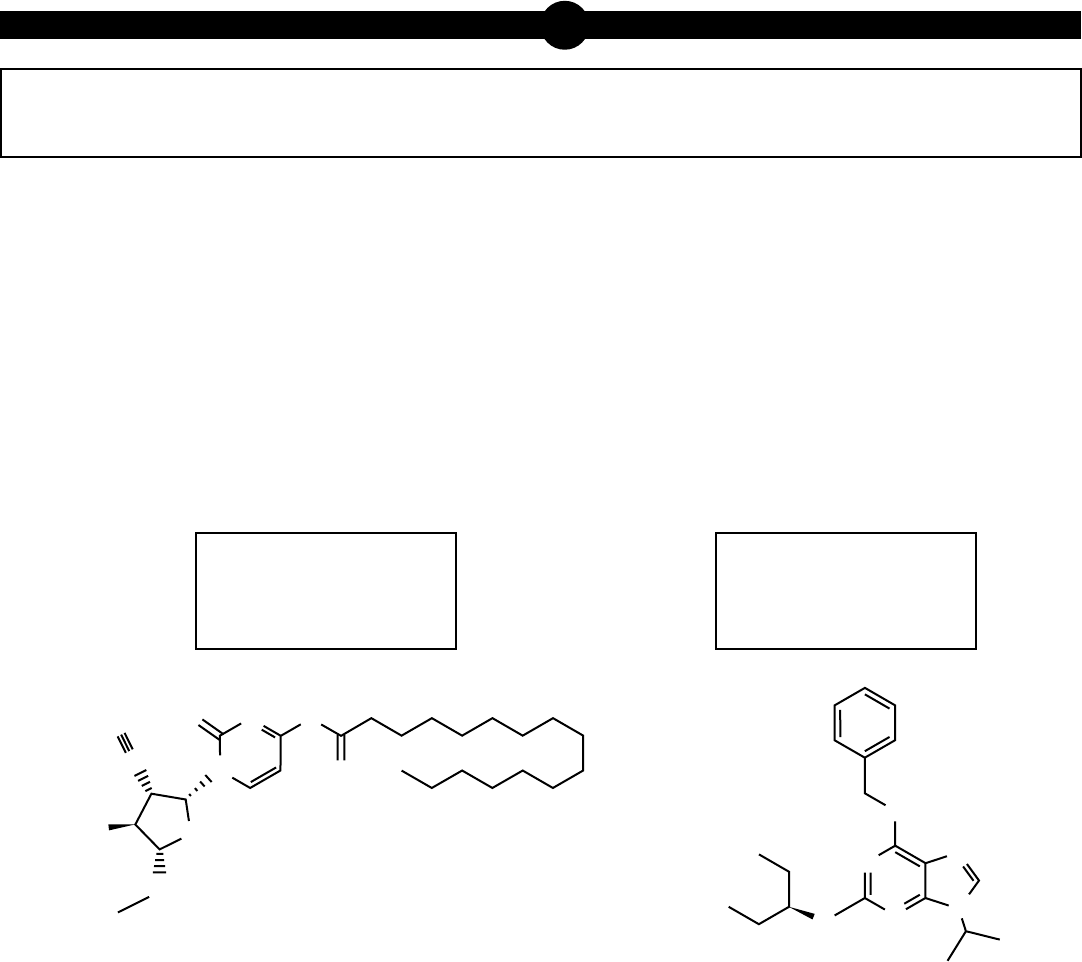
Pennsylvania Keystone Biology Item and Scoring Sampler—September 2021
17
1
BiologyMODULE1
Directions: Use the information presented on page 17 to answer questions 12 and13.
A New Type of Treatment
Some human diseases involve the unregulated growth of cells. Although some patients are not
affected by these growths, many are harmed. Cells in harmful growths divide uncontrollably and
can eventually invade other cells, tissues, and organs of the body.
Some patients carry a mutation on one or more growth-suppressor genes (GSGs). GSGs helpto
repair damage to DNA. This mutation decreases the individual’s ability to fight these harmful
growths. Recently, researchers reported on the results of using a combination of two types of
medicine to treat patients with unregulated growths caused by a lack of functioning GSGs.
Characteristics of Medicine X
N
H
NH
N
N
N
N
HO
Characteristics of Medicine Y
• large molecule
• damages DNA
• large molecule
• decreases enzyme
activity
O
O
H
N
N
N
O
HO
HO
N
C
C
When medicine X and medicine Y are used together, they cause the cell processes in the targeted
cells to fail.
108210108210

Pennsylvania Keystone Biology Item and Scoring Sampler—September 2021
18
1
BiologyMODULE1
12. In order for medicine X to produce the effects that the researchers observed, it must have
entered into which part of the targeted cells?
A. nucleus
B. ribosomes
C. Golgi apparatus
D. rough endoplasmic reticulum
679666679666
Item Information
Alignment BIO.A.1.2.1
Answer Key A
Depth of Knowledge 2
p-value A 73% (correct answer)
p-value B 11%
p-value C 10%
p-value D 6%
Option Annotations A. Key: A medicine that damages DNA would need to enter a cell’s
nucleus.
B. Medicine Y might enter ribosomes since it affects enzyme activity.
C. The Golgi apparatus packages proteins; it does not interact with
DNA.
D. Medicine Y might enter the rough endoplasmic reticulum since
the rough endoplasmic reticulum contains enzyme-manufacturing
ribosomes.
6767

Pennsylvania Keystone Biology Item and Scoring Sampler—September 2021
19
1
BiologyMODULE1
13. Given the properties of the medicine Y molecule, which mechanism is most likely responsible
for medicine Y’s entry into cells?
A. osmosis
B. exocytosis
C. active transport
D. simple diffusion
679665679665
Item Information
Alignment BIO.A.4.1.2
Answer Key C
Depth of Knowledge 2
p-value A 11%
p-value B 11%
p-value C 60% (correct answer)
p-value D 18%
Option Annotations A. Osmosis is the movement of water across a cell membrane.
B. Exocytosis moves materials out of a cell.
C. Key: The movement of large molecules, like medicine Y, into a cell
requires energy and is therefore active transport.
D. Simple diffusion is the flow of small molecules across a cell
membrane.
6767

Pennsylvania Keystone Biology Item and Scoring Sampler—September 2021
20
1
BiologyMODULE1
CONSTRUCTED-RESPONSE ITEM
14. A group of students is given a sample of an unknown substance. The students are
asked to gather evidence to determine whether the substance is living or nonliving.
The students take a small sample of the substance and observe it using a microscope.
Part A: Describe two characteristics of the substance that could be observed to
indicate whether it is living or nonliving.
Characteristic 1:
Characteristic 2:
Go to the next page to finish question 14.
GO ON

Pennsylvania Keystone Biology Item and Scoring Sampler—September 2021
21
1
BiologyMODULE1
14. Continued. Please refer to the previous page for task explanation.
Part B: Describe an investigation that could be performed to classify the
substance as living or nonliving.
STOP
AFTER YOU HAVE CHECKED YOUR WORK, CLOSE YOUR ANSWER
BOOKLET AND TEST BOOKLET SO YOUR TEACHER WILL KNOW
YOU ARE FINISHED.

Pennsylvania Keystone Biology Item and Scoring Sampler—September 2021
22
1
BiologyMODULE1
SCORING GUIDE
#14 Item Information
Alignment BIO.A.1.1.1 Depth of Knowledge 3 Mean Score 1.30
Item-Specific Scoring Guideline
Score Description
3
The response demonstrates a thorough understanding of the characteristics of life
shared by all prokaryotic and eukaryotic organisms by
• describing two characteristics of life that can be observed with a microscope
AND
• describing an investigation to classify a substance as living or nonliving.
The response is clear, complete, and correct.
2
The response demonstrates a partial understanding of the characteristics of life shared
by all prokaryotic and eukaryotic organisms by
• describing two characteristics of life that can be observed with a microscope
OR
• describing one characteristic of life that can be observed with a microscope
and describing an investigation to classify a substance as living or nonliving.
The response may contain some work that is incomplete or unclear.
1
The response demonstrates a minimal understanding of the characteristics of life
shared by all prokaryotic and eukaryotic organisms by
• describing one characteristic of life that can be observed with a microscope
OR
• describing an investigation to classify the substance as living or nonliving.
The response may contain some work that is incomplete or unclear.
0
The response provides insufficient evidence to demonstrate any understanding of the
concept being tested.
Non-
scorables
B – No response written or refusal to respond
F – Foreign language
K – Off task
U – Unreadable
Note: No deductions should be taken for misspelled words or grammatical errors.

Pennsylvania Keystone Biology Item and Scoring Sampler—September 2021
23
1
BiologyMODULE1
Responses That Will Receive Credit
Part A (2 points; 1 point each response):
• The substance is made of cells / is multicellular.
OR
• The substance contains genetic material (DNA).
OR
• The substance reproduces.
OR
• The substance brings in nutrients for energy.
OR
• The substance moves on its own and therefore uses energy.
OR
• The substance responds to a stimulus.
OR
• The substance grows and develops.
Part B (1 point):
• Provide the substance with nutrients and check for growth (change in number or size of
cells) over time.
OR
• Provide the substance with sunlight and check for growth (change in number or size of
cells) over time.
OR
• Place the substance on a grid and check for movement over time.
OR
• Count the number of cells in a small sample of the substance and check for an increase in
cell number over time.
OR
• Touch the substance and check for a response.
Background Information:
• The criteria for life are generally 1) reproduction, 2) order (particularly that it is made
of cells), 3) response to the environment, 4) regulation of the internal environment
(homeostasis), 5) growth and development, 6) evolutionary adaptation, and 7) energy
processing (which can be input of energy, or use of solar energy as with photosynthesis, or
use/output of energy as in movement or biosynthesis).
• Some of these criteria are easily observable, others are not.

Pennsylvania Keystone Biology Item and Scoring Sampler—September 2021
24
1
BiologyMODULE1
STUDENT RESPONSE
Response Score: 3 points
14. A group of students is given a sample of an unknown substance. The students are
asked to gather evidence to determine whether the substance is living or nonliving.
The students take a small sample of the substance and observe it using a microscope.
Part A: Describe two characteristics of the substance that could be observed to
indicate whether it is living or nonliving.
Characteristic 1:
Characteristic 2:
Go to the next page to finish question 14.
GO ON
Go to the next page to finish question 14.
GO ON
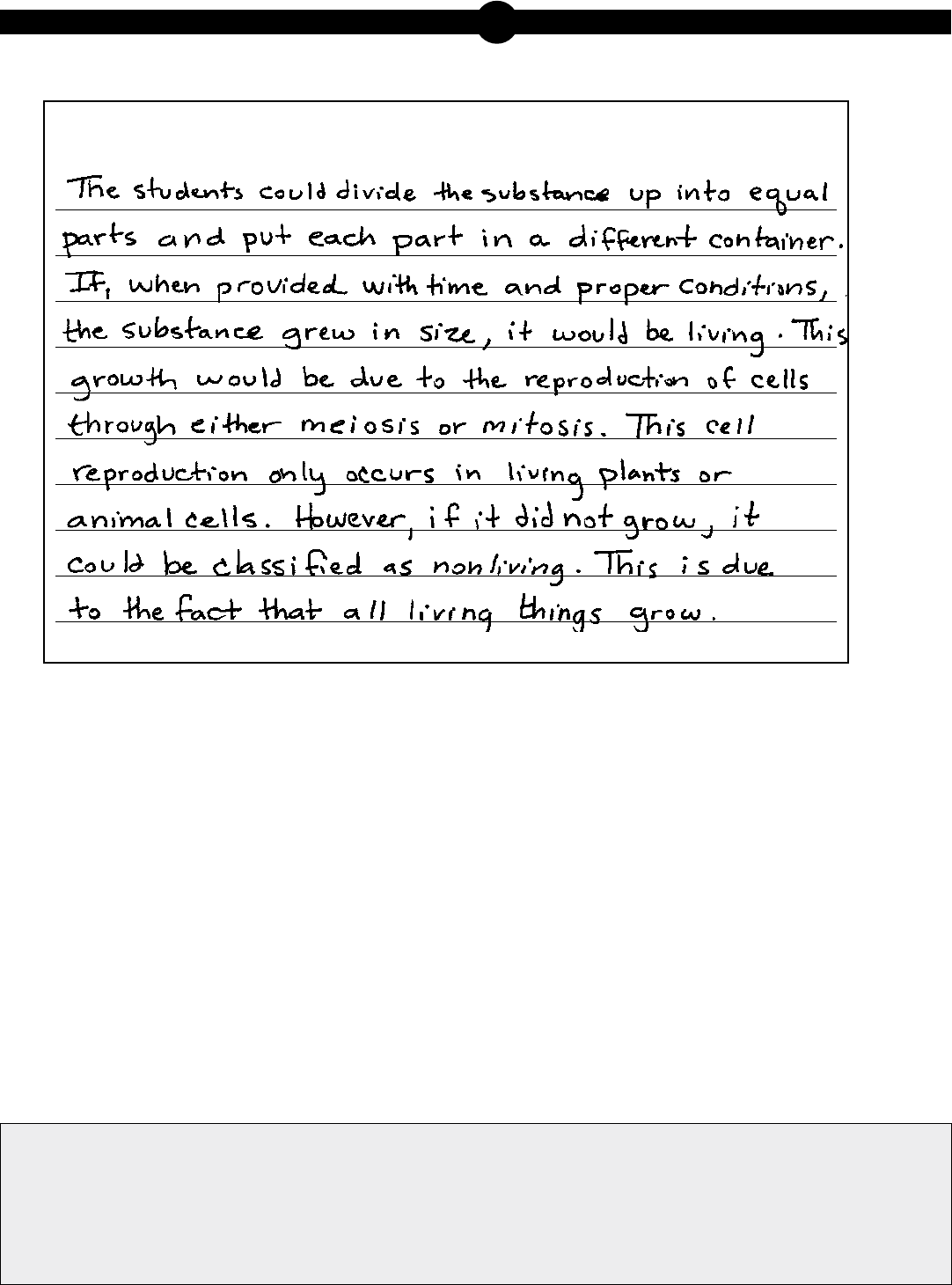
Pennsylvania Keystone Biology Item and Scoring Sampler—September 2021
25
1
BiologyMODULE1
14. Continued. Please refer to the previous page for task explanation.
Part B: Describe an investigation that could be performed to classify the
substance as living or nonliving.
STOP
AFTER YOU HAVE CHECKED YOUR WORK, CLOSE YOUR ANSWER
BOOKLET AND TEST BOOKLET SO YOUR TEACHER WILL KNOW
YOU ARE FINISHED.
The response demonstrates a thorough understanding of the characteristics of life shared by all prokaryotic and
eukaryotic organisms. In Part A, the response correctly describes two characteristics of life that can be observed
with a microscope. Characteristic 1: “If the substance is moving . . . Movement requires energy ...” Characteristic2:
“If the substance grows . . . Growth requires cell reproduction ...” In Part B, the response correctly describes an
investigation to classify a substance as living or nonliving: “... divide the substance up into equal parts and put each
part in a different container. If, when provided with time and proper conditions, the substance grew in size, it would be
living.” The response is clear, complete, and correct.

Pennsylvania Keystone Biology Item and Scoring Sampler—September 2021
26
1
BiologyMODULE1
STUDENT RESPONSE
Response Score: 2 points
Part A
Question 14
Page 1 of 2

Pennsylvania Keystone Biology Item and Scoring Sampler—September 2021
27
1
BiologyMODULE1
STUDENT RESPONSE
Part B
Question 14
Page 2 of 2
The response demonstrates a partial understanding of the characteristics of life shared by all prokaryotic and eukaryotic
organisms. In Part A, the response correctly describes only one characteristic of life that can be observed with a microscope.
Characteristic 1: “... if hte students can see working cells.” The response for Characteristic 2 in Part A “... if the student saw a
membrane” is incorrect and receives no credit. In Part B, the response correctly describes an investigation to classify a substance
as living or nonliving: “... put the substance in sunlight and give it water (like a plant) and see if it grows/moves or changes in
anyway ...” The response contains work that is incomplete or unclear.
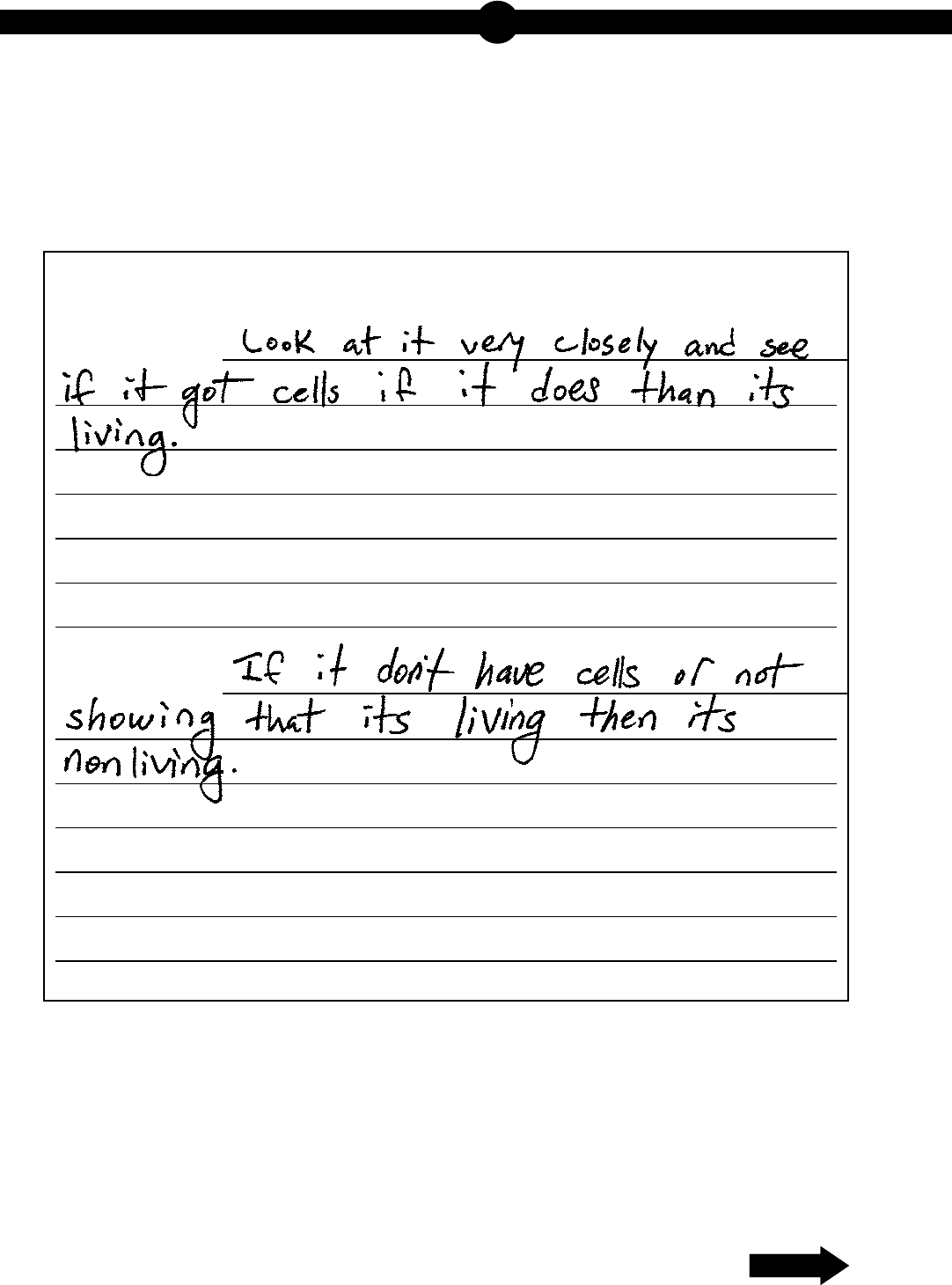
Pennsylvania Keystone Biology Item and Scoring Sampler—September 2021
28
1
BiologyMODULE1
STUDENT RESPONSE
Response Score: 1 point
14. A group of students is given a sample of an unknown substance. The students are
asked to gather evidence to determine whether the substance is living or nonliving.
The students take a small sample of the substance and observe it using a microscope.
Part A: Describe two characteristics of the substance that could be observed to
indicate whether it is living or nonliving.
Characteristic 1:
Characteristic 2:
Go to the next page to finish question 14.
GO ON
Go to the next page to finish question 14.
GO ON

Pennsylvania Keystone Biology Item and Scoring Sampler—September 2021
29
1
BiologyMODULE1
14. Continued. Please refer to the previous page for task explanation.
Part B: Describe an investigation that could be performed to classify the
substance as living or nonliving.
STOP
AFTER YOU HAVE CHECKED YOUR WORK, CLOSE YOUR ANSWER
BOOKLET AND TEST BOOKLET SO YOUR TEACHER WILL KNOW
YOU ARE FINISHED.
The response demonstrates a minimal understanding of the characteristics of life shared by all prokaryotic and
eukaryotic organisms. In Part A, the response correctly describes only one characteristic of life that can be observed
with a microscope. Characteristic 1: “... see if it got cells ...” The response for Characteristic 2 in Part A is a
continuation of the response for Characteristic 1; it does not describe a second characteristic. The response for
Characteristic 2 does not receive any credit. In Part B, the response “Grab a microscope and observed it very closely”
does not describe an investigation to classify a substance as living or nonliving. It is too general and does not receive
any credit. The response contains work that is incomplete or unclear.

Pennsylvania Keystone Biology Item and Scoring Sampler—September 2021
30
1
BiologyMODULE1
STUDENT RESPONSE
Response Score: 0 points
Part A
Question 14
Page 1 of 2

Pennsylvania Keystone Biology Item and Scoring Sampler—September 2021
31
1
BiologyMODULE1
STUDENT RESPONSE
Part B
Question 14
Page 2 of 2
The response provides insufficient evidence to demonstrate any understanding of the characteristics of life shared by all
prokaryotic and eukaryotic organisms. In Part A, the response does not describe any characteristics of life that can be observed
with a microscope. The response for Characteristic 1 does not give a valid characteristic, and the response for Characteristic 2 is
an inverse of Characteristic 1. Part A does not receive any credit. In Part B, the response “check to see what’s living inside” does
not describe an investigation to classify a substance as living or nonliving. It is too general and does not receive any credit. The
response contains work that is incomplete or unclear.
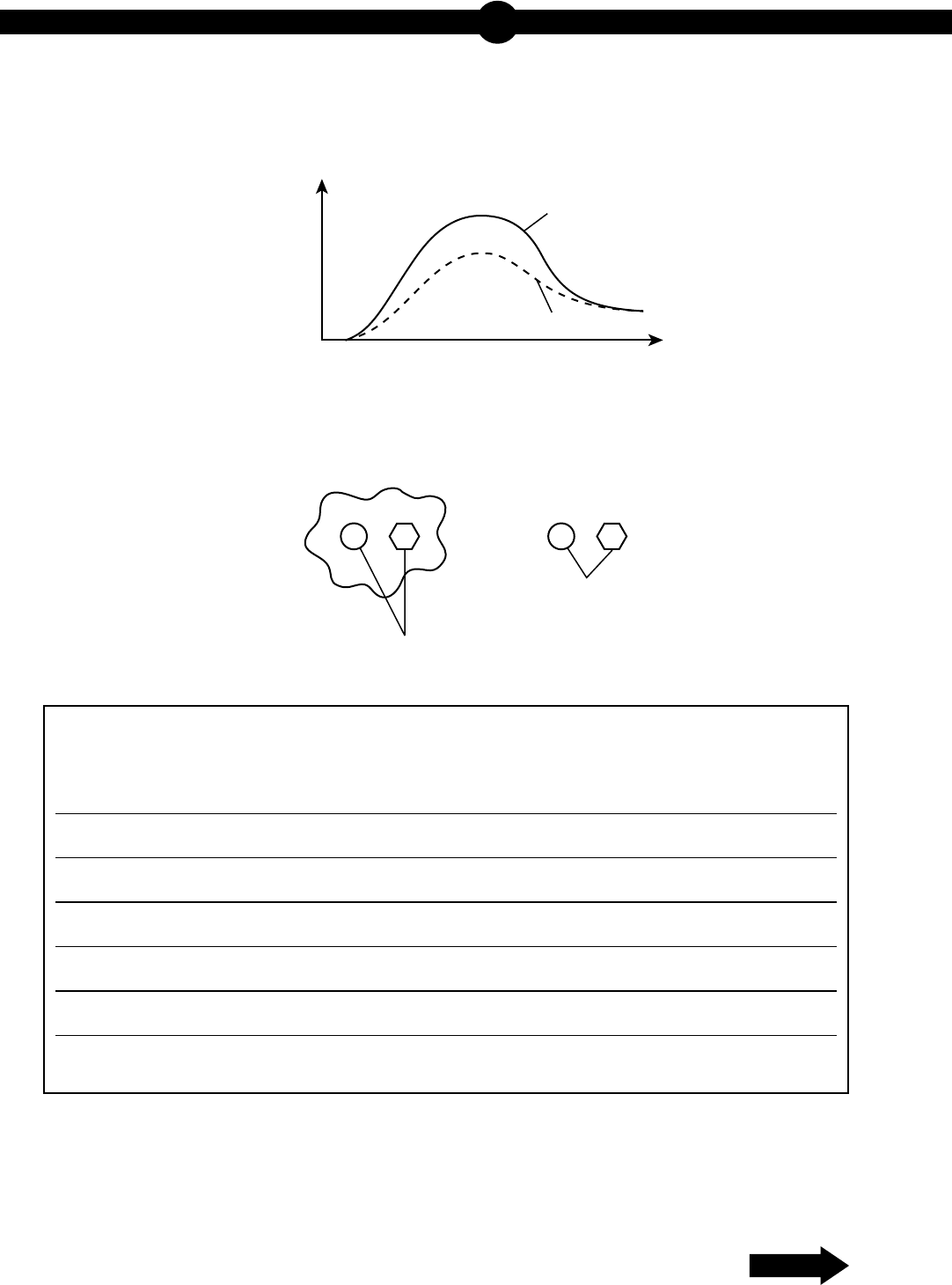
Pennsylvania Keystone Biology Item and Scoring Sampler—September 2021
32
1
BiologyMODULE1
CONSTRUCTED-RESPONSE ITEM
15. Use the graph and diagram below to answer the question.
Effects of Enzyme A
Reaction Progress
without
Enzyme A
with Enzyme A
Free Energy
Enzyme A
active sites
substrates
Part A: Explain how Enzyme A acts as a catalyst in the reaction.
Be sure to include energy and time in your answer.
Go to the next page to finish question 15.
GO ON

Pennsylvania Keystone Biology Item and Scoring Sampler—September 2021
33
1
BiologyMODULE1
15. Continued. Please refer to the previous page for task explanation.
Part B: Conditions around an enzyme change and affect the shape of the
enzyme’s active sites. Predict how this would affect the enzyme’s ability to
catalyze the reaction.
STOP
AFTER YOU HAVE CHECKED YOUR WORK, CLOSE YOUR ANSWER
BOOKLET AND TEST BOOKLET SO YOUR TEACHER WILL KNOW
YOU ARE FINISHED.

Pennsylvania Keystone Biology Item and Scoring Sampler—September 2021
34
1
BiologyMODULE1
SCORING GUIDE
#15 Item Information
Alignment BIO.A.2.3.1 Depth of Knowledge 3 Mean Score 0.89
Item-Specific Scoring Guideline
Score Description
3
The response demonstrates a thorough understanding of the role of an enzyme as a
catalyst in regulating a specific biochemical reaction by
• explaining how Enzyme A acts as a catalyst in the reaction with respect to
energy,
AND
• explaining how Enzyme A acts as a catalyst in the reaction with respect to
time,
AND
• predicting how changing the shape of the enzyme’s active site would affect the
enzyme’s ability to catalyze the reaction.
The response is clear, complete, and correct.
2
The response demonstrates a partial understanding of the role of an enzyme as a
catalyst in regulating a specific biochemical reaction by fulfilling two of the three
bullets listed under the 3-point response.
The response may contain some work that is incomplete or unclear.
1
The response demonstrates a minimal understanding of the role of an enzyme as
a catalyst in regulating a specific biochemical reaction by fulfilling one of the three
bullets listed under the 3-point response.
The response may contain some work that is incomplete or unclear.
0
The response provides insufficient evidence to demonstrate any understanding of the
concept being tested.
Non-
scorables
B – No response written or refusal to respond
F – Foreign language
K – Off task
U – Unreadable
Note: No deductions should be taken for misspelled words or grammatical errors.

Pennsylvania Keystone Biology Item and Scoring Sampler—September 2021
35
1
BiologyMODULE1
Responses That Will Receive Credit
Part A (2 points):
• Enzyme A acts as a catalyst by reducing the activation energy, or the energy that is needed
to get the reaction started. (When the substrates attach to the enzyme’s active sites, they
are brought close together, facilitating the reaction.) The reaction takes less time to occur
(“the reaction is faster” is also acceptable).
Part B (1 point):
• When the shape of an enzyme’s active site is changed, the substrate cannot attach to the
active site; it will not “fit.” The enzyme would not be able to catalyze the reaction.
• When the shape of the enzyme’s active site is slightly changed (caused by a change in pH,
for example), the enzyme activity can become greatly reduced.
(Note: Information in parentheses is not necessary to receive full credit for Part A or Part B.)
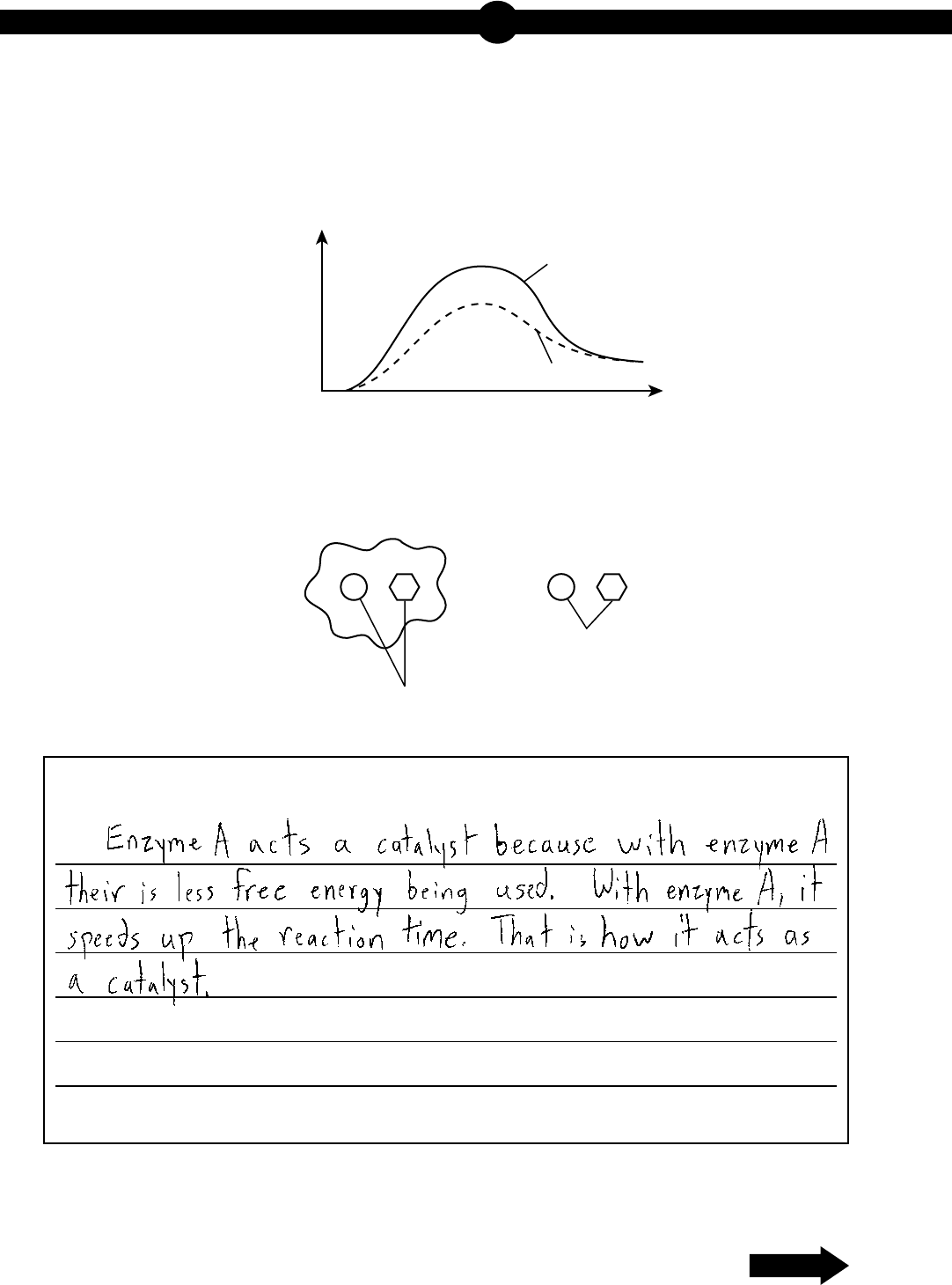
Pennsylvania Keystone Biology Item and Scoring Sampler—September 2021
36
1
BiologyMODULE1
STUDENT RESPONSE
Response Score: 3 points
15. Use the graph and diagram below to answer the question.
Effects of Enzyme A
Reaction Progress
without
Enzyme A
with Enzyme A
Free Energy
Enzyme A
active sites
substrates
Part A: Explain how Enzyme A acts as a catalyst in the reaction.
Be sure to include energy and time in your answer.
Go to the next page to finish question 15.
GO ON

Pennsylvania Keystone Biology Item and Scoring Sampler—September 2021
37
1
BiologyMODULE1
15. Continued. Please refer to the previous page for task explanation.
Part B: Conditions around an enzyme change and affect the shape of the
enzyme’s active sites. Predict how this would affect the enzyme’s ability to
catalyze the reaction.
STOP
AFTER YOU HAVE CHECKED YOUR WORK, CLOSE YOUR ANSWER
BOOKLET AND TEST BOOKLET SO YOUR TEACHER WILL KNOW
YOU ARE FINISHED.
The response demonstrates a thorough understanding of the role of an enzyme as a catalyst in regulating a
specific biochemical reaction by completing all three tasks presented in the item. The student explains that
Enzyme A is a catalyst since the reaction uses less energy and the reaction time is reduced. The explanation
provided includes both energy and time. In Part B, the student predicts that the enzyme would not act as a
catalyst since the active sites would change. The response is clear, complete, and correct.
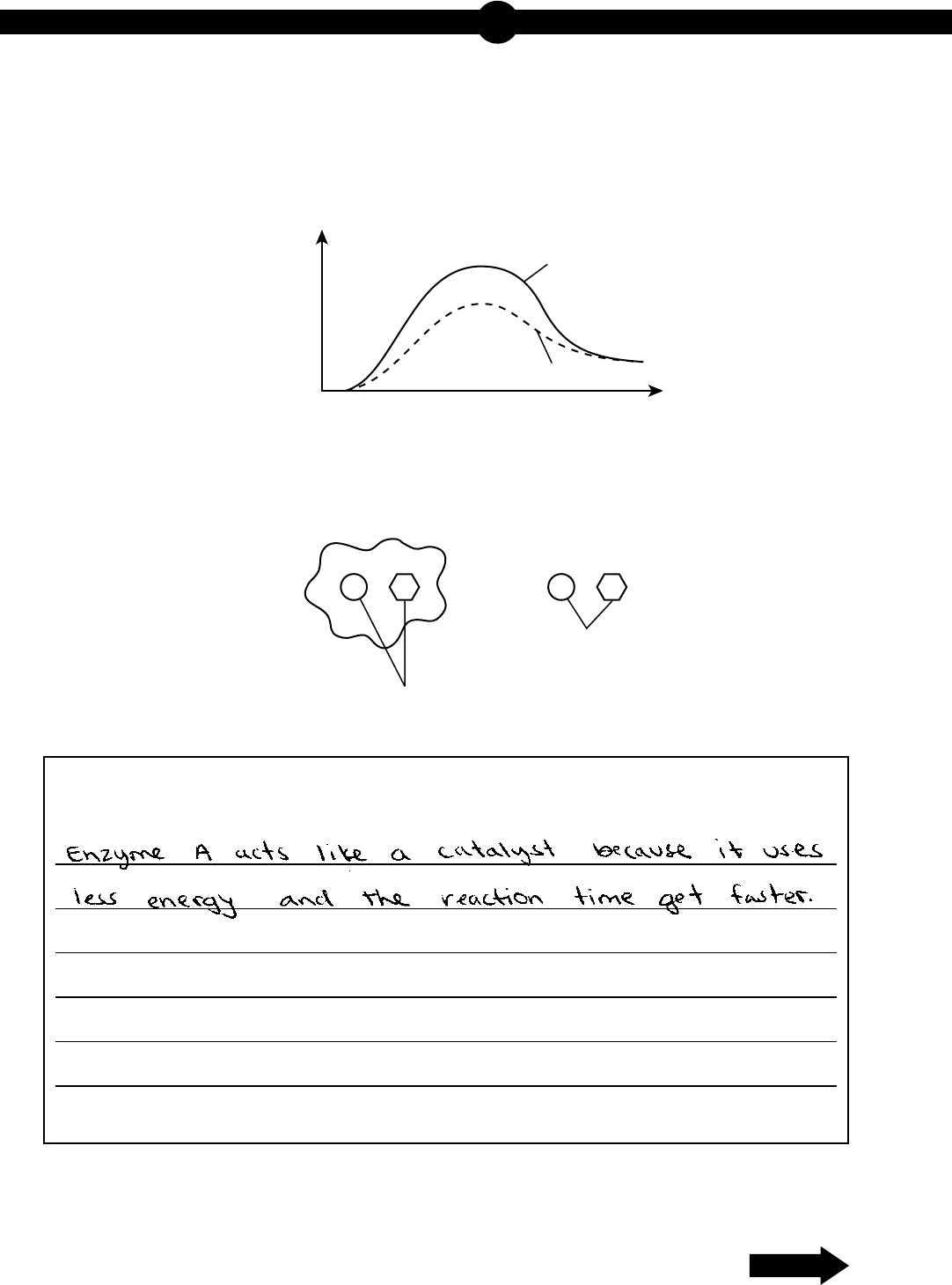
Pennsylvania Keystone Biology Item and Scoring Sampler—September 2021
38
1
BiologyMODULE1
STUDENT RESPONSE
Response Score: 2 points
15. Use the graph and diagram below to answer the question.
Effects of Enzyme A
Reaction Progress
without
Enzyme A
with Enzyme A
Free Energy
Enzyme A
active sites
substrates
Part A: Explain how Enzyme A acts as a catalyst in the reaction.
Be sure to include energy and time in your answer.
Go to the next page to finish question 15.
GO ON

Pennsylvania Keystone Biology Item and Scoring Sampler—September 2021
39
1
BiologyMODULE1
15. Continued. Please refer to the previous page for task explanation.
Part B: Conditions around an enzyme change and affect the shape of the
enzyme’s active sites. Predict how this would affect the enzyme’s ability to
catalyze the reaction.
STOP
AFTER YOU HAVE CHECKED YOUR WORK, CLOSE YOUR ANSWER
BOOKLET AND TEST BOOKLET SO YOUR TEACHER WILL KNOW
YOU ARE FINISHED.
The response demonstrates a partial understanding of the role of an enzyme as a catalyst in regulating a specific
biochemical reaction by completing two of the tasks presented in the item. The student provides an acceptable
response about how Enzyme A acts as a catalyst in the reaction by explaining that less energy is used and the
reaction time is reduced. The prediction of how a change in shape would affect the enzyme’s ability to catalyze
the reaction is unclear. “The enzyme may cause the opposite affects with the catalyze being used” is not enough
for credit. The student should have more completely described the opposite effects for additional credit. This
response contains work that is incomplete or unclear.
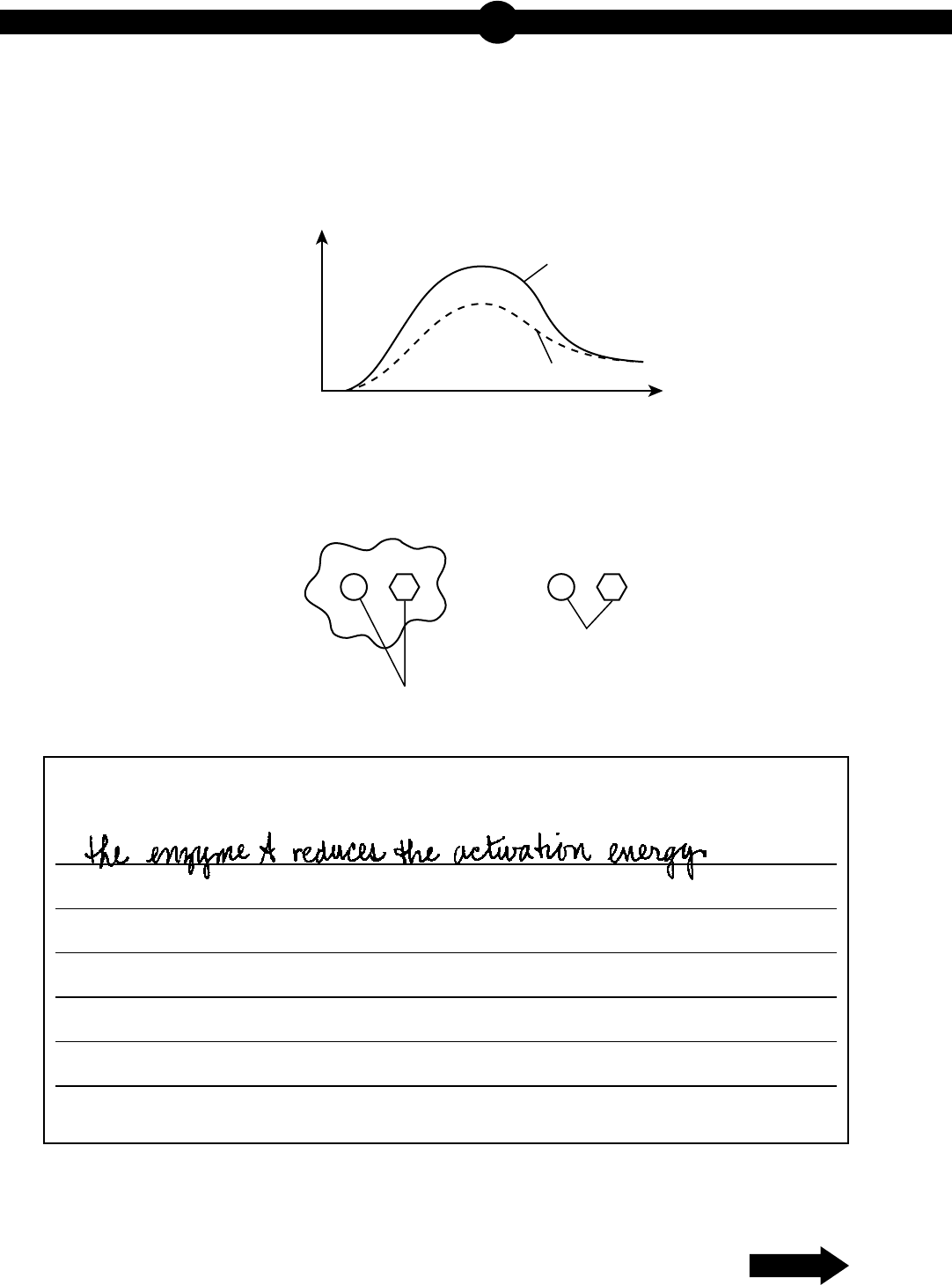
Pennsylvania Keystone Biology Item and Scoring Sampler—September 2021
40
1
BiologyMODULE1
STUDENT RESPONSE
Response Score: 1 point
15. Use the graph and diagram below to answer the question.
Effects of Enzyme A
Reaction Progress
without
Enzyme A
with Enzyme A
Free Energy
Enzyme A
active sites
substrates
Part A: Explain how Enzyme A acts as a catalyst in the reaction.
Be sure to include energy and time in your answer.
Go to the next page to finish question 15.
GO ON

Pennsylvania Keystone Biology Item and Scoring Sampler—September 2021
41
1
BiologyMODULE1
15. Continued. Please refer to the previous page for task explanation.
Part B: Conditions around an enzyme change and affect the shape of the
enzyme’s active sites. Predict how this would affect the enzyme’s ability to
catalyze the reaction.
STOP
AFTER YOU HAVE CHECKED YOUR WORK, CLOSE YOUR ANSWER
BOOKLET AND TEST BOOKLET SO YOUR TEACHER WILL KNOW
YOU ARE FINISHED.
The response demonstrates a minimal understanding of the role of an enzyme as a catalyst in regulating a
specific biochemical reaction by completing one of the tasks presented in the item. The student correctly states
that Enzyme A reduces the activation energy but fails to provide any information about the effect on time in
the response. The response in Part B does not correctly answer the question presented by predicting that the
enzyme would catalyze the reaction (which is a repeat of the information given in Part A). The response contains
work that is incomplete or unclear.

Pennsylvania Keystone Biology Item and Scoring Sampler—September 2021
42
1
BiologyMODULE1
STUDENT RESPONSE
Response Score: 0 points
15. Use the graph and diagram below to answer the question.
Effects of Enzyme A
Reaction Progress
without
Enzyme A
with Enzyme A
Free Energy
Enzyme A
active sites
substrates
Part A: Explain how Enzyme A acts as a catalyst in the reaction.
Be sure to include energy and time in your answer.
Go to the next page to finish question 15.
GO ON
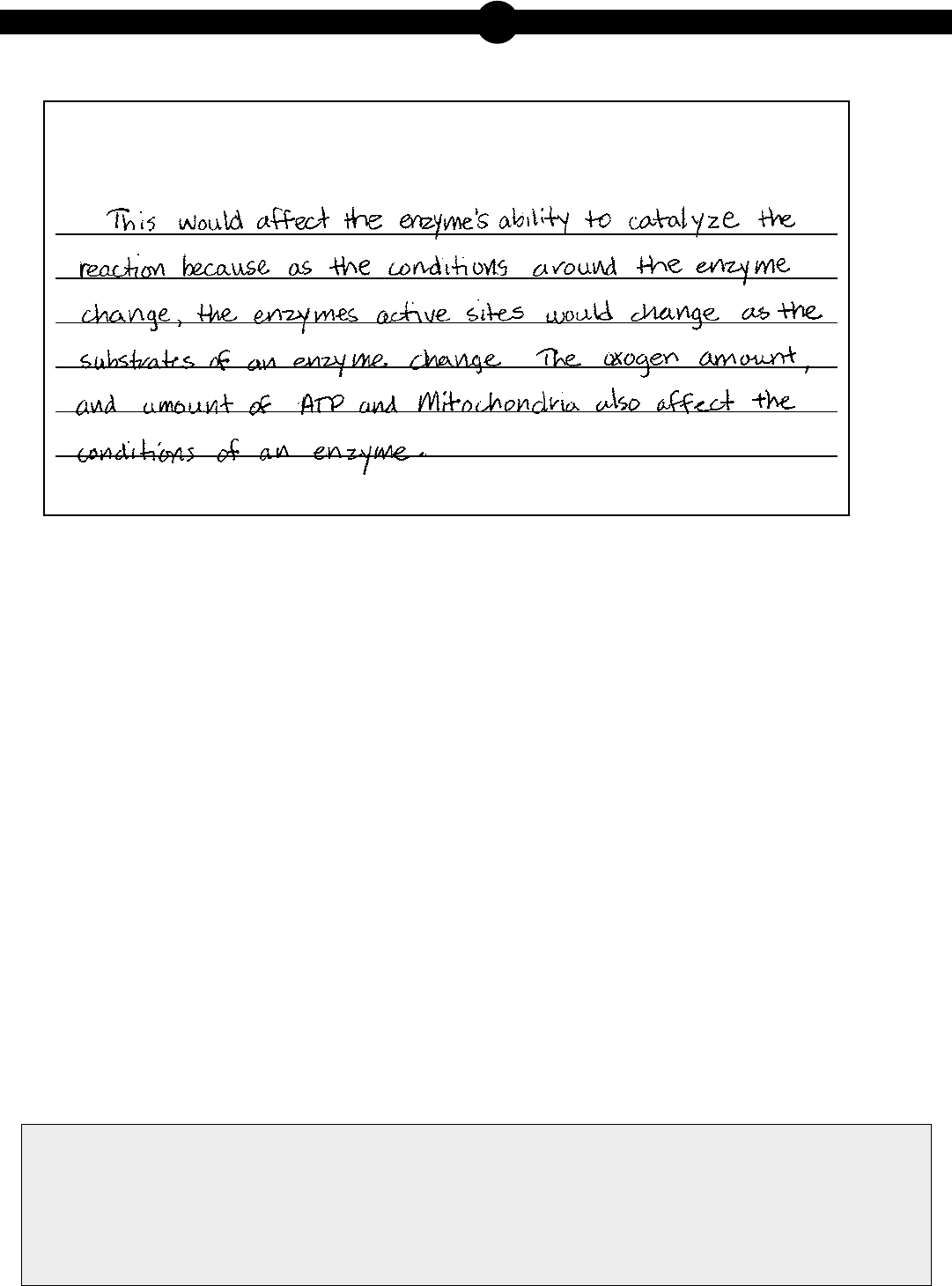
Pennsylvania Keystone Biology Item and Scoring Sampler—September 2021
43
1
BiologyMODULE1
15. Continued. Please refer to the previous page for task explanation.
Part B: Conditions around an enzyme change and affect the shape of the
enzyme’s active sites. Predict how this would affect the enzyme’s ability to
catalyze the reaction.
STOP
AFTER YOU HAVE CHECKED YOUR WORK, CLOSE YOUR ANSWER
BOOKLET AND TEST BOOKLET SO YOUR TEACHER WILL KNOW
YOU ARE FINISHED.
The response demonstrates an insufficient understanding of the role of an enzyme as a catalyst in regulating a
specific biochemical reaction by not completing any of the tasks presented in the item. The explanation in PartA
does not correctly explain how Enzyme A acts as a catalyst in the reaction. The student describes the shape
of the graph shown but does not explain the effect Enzyme A would have on the energy or time. The student
does not provide a prediction about how the change in shape would affect the enzyme’s ability to catalyze the
reaction. The response attempts to explain how the conditions would change and not the effect these changes
would have. The response contains work that is incomplete or unclear.
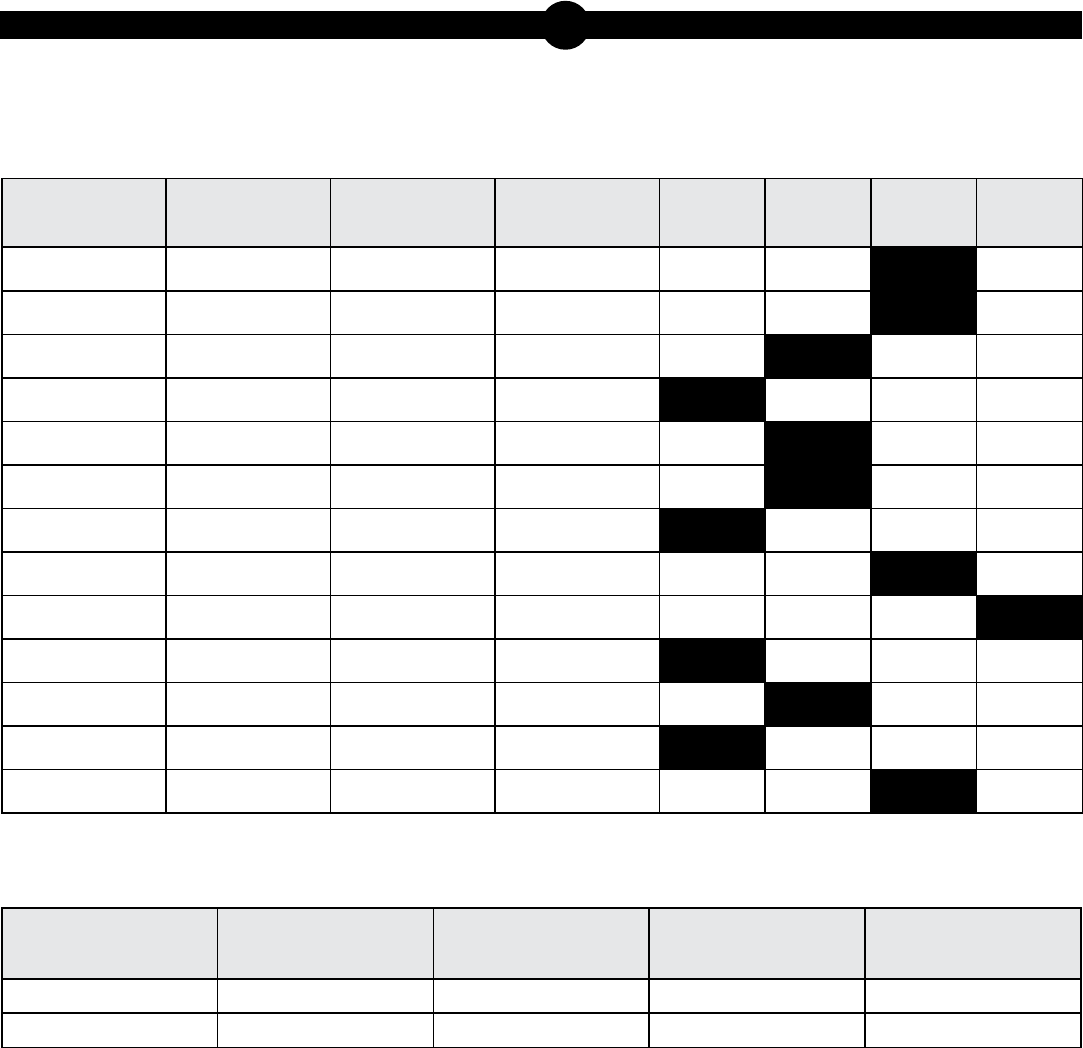
Pennsylvania Keystone Biology Item and Scoring Sampler—September 2021
44
1
BiologyMODULE1
BIOLOGY MODULE 1—SUMMARY DATA
MULTIPLE-CHOICE
Sample
Number
Alignment Answer Key
Depth of
Knowledge
p-value
A
p-value
B
p-value
C
p-value
D
1 BIO.A.1.1.1 C 2 12% 13% 66% 9%
2
BIO.A.2.2.1 C 2 9% 4% 73% 14%
3
BIO.A.2.2.2 B 2 4% 58% 9% 29%
4
BIO.A.2.2.3 A 2 48% 17% 23% 12%
5
BIO.A.2.3.1 B 2 14% 65% 11% 10%
6
BIO.A.2.3.2 B 2 20% 36% 24% 20%
7
BIO.A.3.1.1 A 2 46% 21% 10% 23%
8 BIO.A.3.2.1 C 2 8% 25% 58% 9%
9
BIO.A.3.2.2 D 2 7% 10% 39% 44%
10 BIO.A.4.1.1 A 2 60% 11% 19% 10%
11
BIO.A.4.1.2 B 2 8% 49% 26% 17%
12 (P) BIO.A.1.2.1 A 2 73% 11% 10% 6%
13 (P) BIO.A.4.1.2 C 2 11% 11% 60% 18%
CONSTRUCTED-RESPONSE
Sample
Number
Alignment Points
Depth of
Knowledge
Mean Score
14 BIO.A.1.1.1 3 3 1.30
15 BIO.A.2.3.1 3 3 0.89

Pennsylvania Keystone Biology Item and Scoring Sampler—September 2021
45
THIS PAGE IS
INTENTIONALLY BLANK.
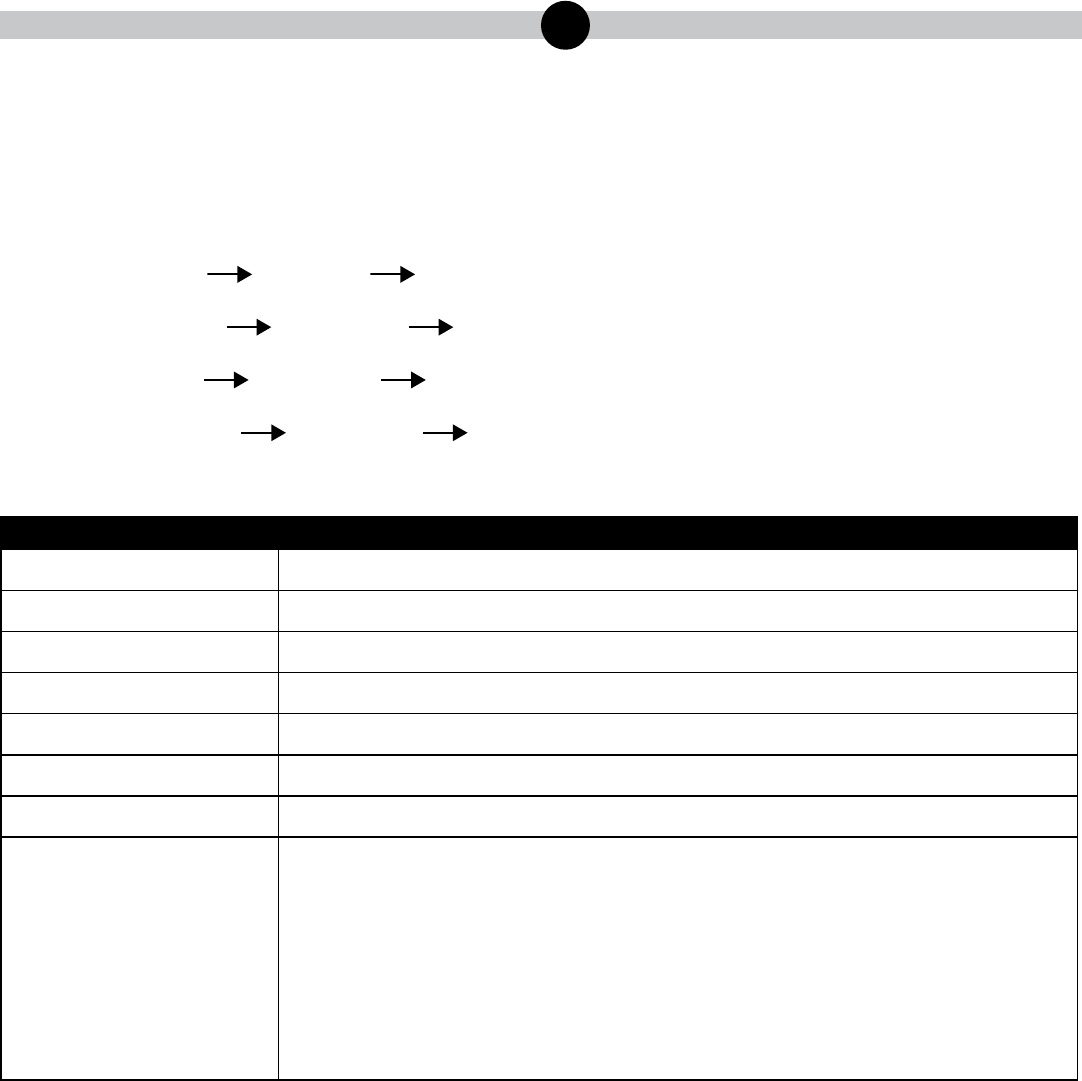
Pennsylvania Keystone Biology Item and Scoring Sampler—September 2021
46
2
BiologyMODULE2
BIOLOGY MODULE 2
MULTIPLE-CHOICE ITEMS
1. At a point in the cell cycle, chromosomes have aligned near the middle of a cell. Which
sequence of events will the cell need to complete to produce two identical daughter cells?
A. anaphase telophase cytokinesis
B. anaphase II
telophase II cytokinesis II
C. prophase
metaphase anaphase
D. metaphase II anaphase II telophase II
681050681050
Item Information
Alignment BIO.B.1.1.1
Answer Key A
Depth of Knowledge 2
p-value A 48% (correct answer)
p-value B 13%
p-value C 25%
p-value D 14%
Option Annotations A. Key: Chromosomes align during metaphase, which is followed by
anaphase.
B. This sequence describes meiosis, which produces four unique
daughter cells.
C. Chromosomes align during metaphase, which occurs after
prophase.
D. This sequence describes meiosis, which produces four unique
daughter cells.
6767

Pennsylvania Keystone Biology Item and Scoring Sampler—September 2021
47
2
BiologyMODULE2
2. Which statement best describes the outcomes of both meiosis and mitosis?
A. Cell division results in daughter cells that contain DNA.
B. Each daughter cell has two complete sets of chromosomes.
C. Within a cell, two chromosomes pair up and exchange segments of genetic material.
D. Genetically identical daughter cells are produced that can function as body cells or
sex cells.
681522681522
Item Information
Alignment BIO.B.1.1.2
Answer Key A
Depth of Knowledge 2
p-value A 43% (correct answer)
p-value B 16%
p-value C 16%
p-value D 25%
Option Annotations A. Key: Both meiosis and mitosis result in daughter cells containing
DNA.
B. In mitosis, each daughter cell has two complete sets of
chromosomes.
C. Recombination (or crossing-over) occurs exclusively in meiosis.
D. Mitosis produces genetically identical body cells, not sex cells.
6767

Pennsylvania Keystone Biology Item and Scoring Sampler—September 2021
48
2
BiologyMODULE2
3. In order to study genetic mutations, scientists must study genetic material. Which statement
describes the genetic material scientists are most likely studying?
A. They study alleles that contain chromosomes, which are RNA.
B. They study alleles that contain genes, which are chromosomes.
C. They study chromosomes that contain DNA segments, which are RNA.
D. They study chromosomes that contain genes, which are DNA segments.
643346643346
Item Information
Alignment BIO.B.1.2.2
Answer Key D
Depth of Knowledge 2
p-value A 7%
p-value B 20%
p-value C 18%
p-value D 55% (correct answer)
Option Annotations A. Alleles are different forms of a gene, and genes contain DNA.
B. Alleles are different forms of a gene, and genes make up
chromosomes.
C. Chromosomes are made up of genes, and genes contain DNA
segments.
D. Key: Chromosomes are made up of genes, and genes contain DNA
segments.
6767
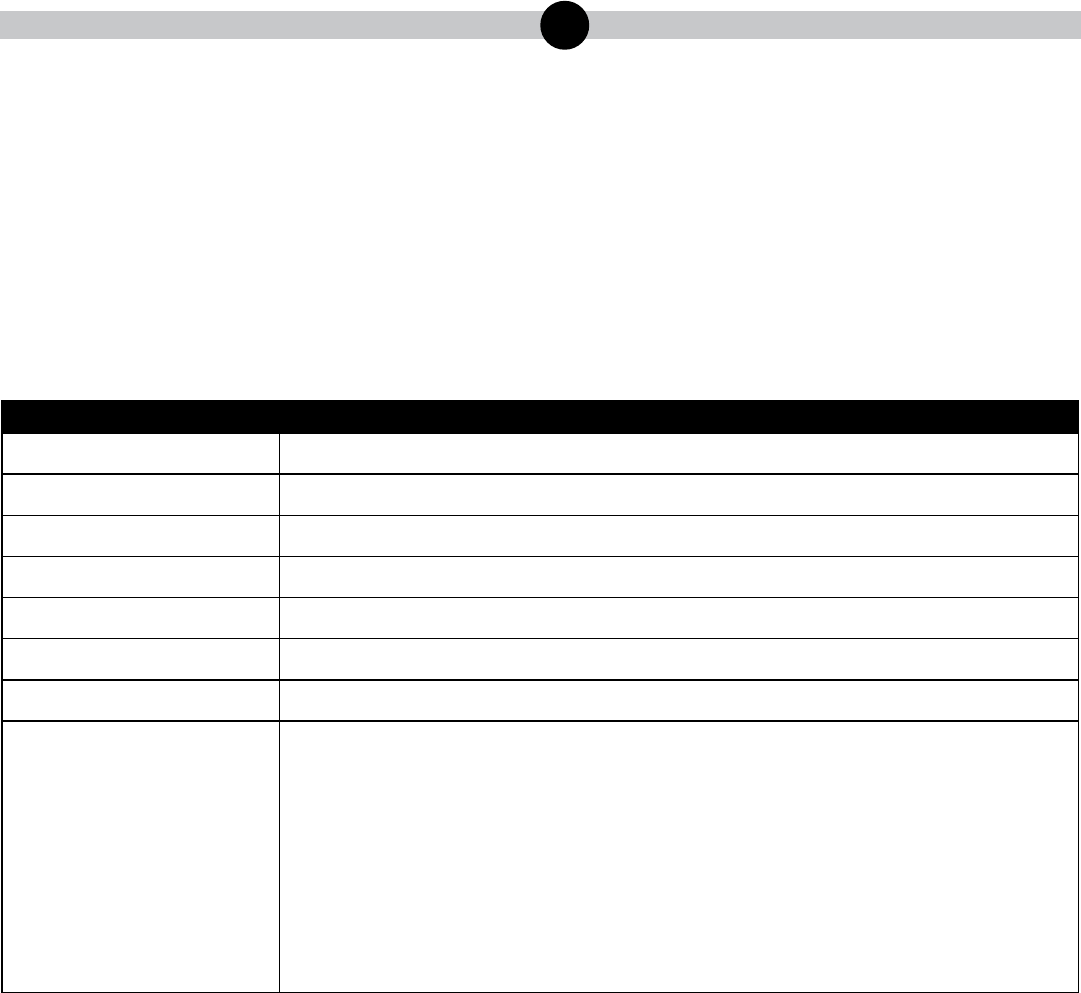
Pennsylvania Keystone Biology Item and Scoring Sampler—September 2021
49
2
BiologyMODULE2
4. An inversion occurs along part of a chromosome. How does the inversion most likely affect
the region in which it occurs?
A. Recessive alleles in the region become dominant alleles.
B. The information in the region is read differently during transcription.
C. The coding sequence in the region disappears entirely from the cell.
D. Multiple frameshift errors in the region are triggered after translation.
678894678894
Item Information
Alignment BIO.B.2.1.2
Answer Key B
Depth of Knowledge 2
p-value A 17%
p-value B 46% (correct answer)
p-value C 13%
p-value D 24%
Option Annotations A. Dominant or recessive alleles cannot change their phenotypic
expression.
B. Key: An inversion occurs when a chromosomal segment is rotated
and reinserted in the same location, which causes the region to be
read differently.
C. A deletion mutation causes part of the coding sequence to
disappear.
D. Frameshift errors are caused by insertions or deletions, not
inversions.
6767
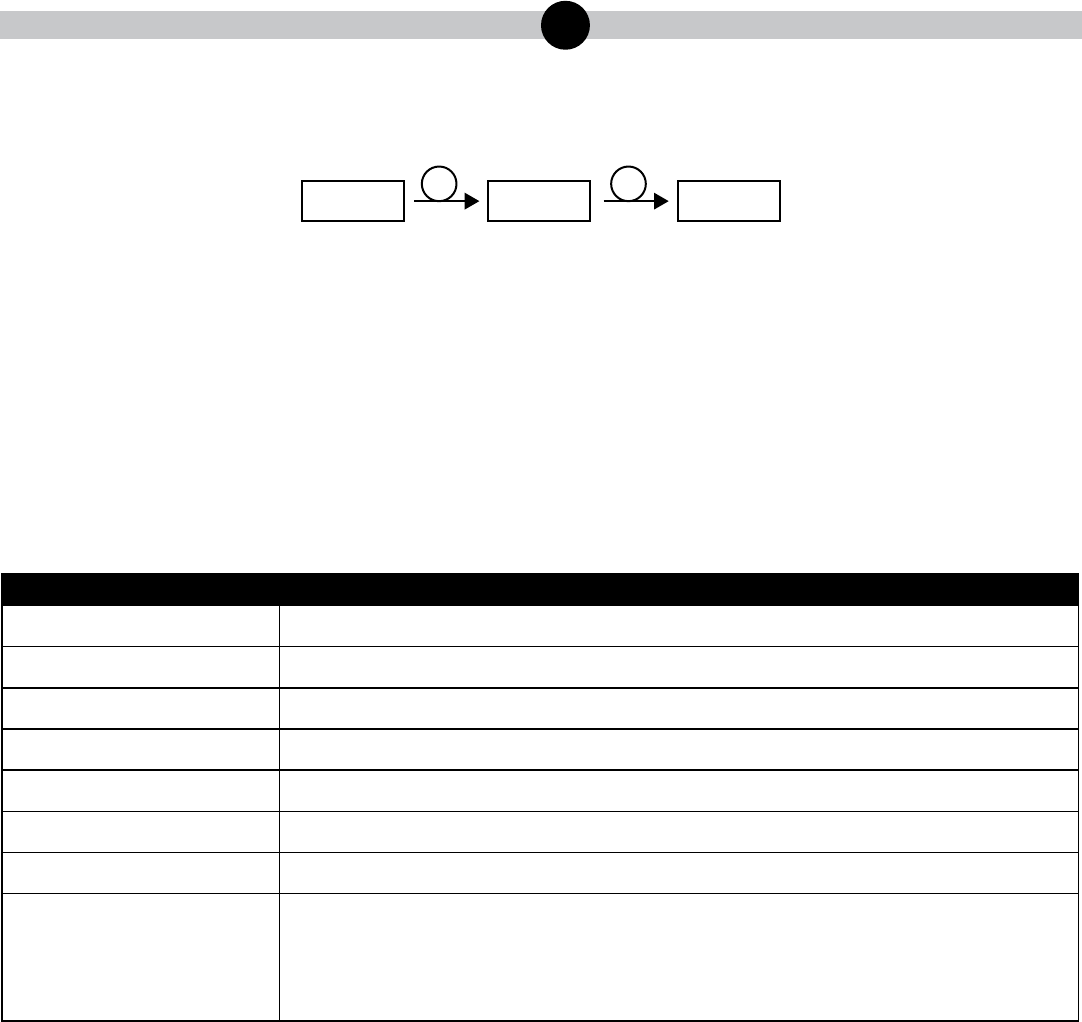
Pennsylvania Keystone Biology Item and Scoring Sampler—September 2021
50
2
BiologyMODULE2
5. Use the diagram below to answer the question.
DNA
Y
mRNA
Z
protein
Biological Process
Which labels correctly complete the diagram?
A. Y is replication, and Z is translation.
B. Y is translation, and Z is replication.
C. Y is transcription, and Z is translation.
D. Y is translation, and Z is transcription.
643400643400
Item Information
Alignment BIO.B.2.2.1
Answer Key C
Depth of Knowledge 2
p-value A 19%
p-value B 13%
p-value C 40% (correct answer)
p-value D 28%
Option Annotations A. Process Y is transcription, and process Z is translation.
B. Process Y is transcription, and process Z is translation.
C. Key: Process Y is transcription, and process Z is translation.
D. Process Y is transcription, and process Z is translation.
6767

Pennsylvania Keystone Biology Item and Scoring Sampler—September 2021
51
2
BiologyMODULE2
6. Which statement best describes how geographic isolation can contribute to land animal
speciation?
A. Geographic isolation physically separates populations but allows them to interact.
B. Geographic isolation physically separates populations and prevents them from interacting.
C. Geographic isolation causes genetic changes in individual organisms but allows them
to interact.
D. Geographic isolation causes genetic changes in individual organisms and prevents them
from interacting.
678972678972
Item Information
Alignment BIO.B.3.1.2
Answer Key B
Depth of Knowledge 2
p-value A 11%
p-value B 59% (correct answer)
p-value C 12%
p-value D 18%
Option Annotations A. Geographic isolation prevents populations from interacting.
B. Key: Geographic isolation involves a physical separation of
populations that prevents their interaction.
C. Geographic isolation prevents populations from interacting.
D. Geographic isolation is caused by physical separation of
populations.
6767

Pennsylvania Keystone Biology Item and Scoring Sampler—September 2021
52
2
BiologyMODULE2
7. Which condition would most likely result in an increase in the phenotypic variation within
a population?
A. The variety of food available in the habitat decreases.
B. A mutation leads to individuals with genetic differences.
C. Competition is reduced for all individuals during the winter.
D. Climate remains unchanged in the population’s ecosystem.
679258679258
Item Information
Alignment BIO.B.3.1.3
Answer Key B
Depth of Knowledge 2
p-value A 14%
p-value B 63% (correct answer)
p-value C 12%
p-value D 11%
Option Annotations A. Phenotypic variation related to environmental factors is not
heritable.
B. Key: Mutations are the key source of genetic variation leading to
phenotypic variation in a population.
C. Reduced competition is unlikely to promote differential
reproduction.
D. Climate consistency is unlikely to promote differential reproduction.
6767
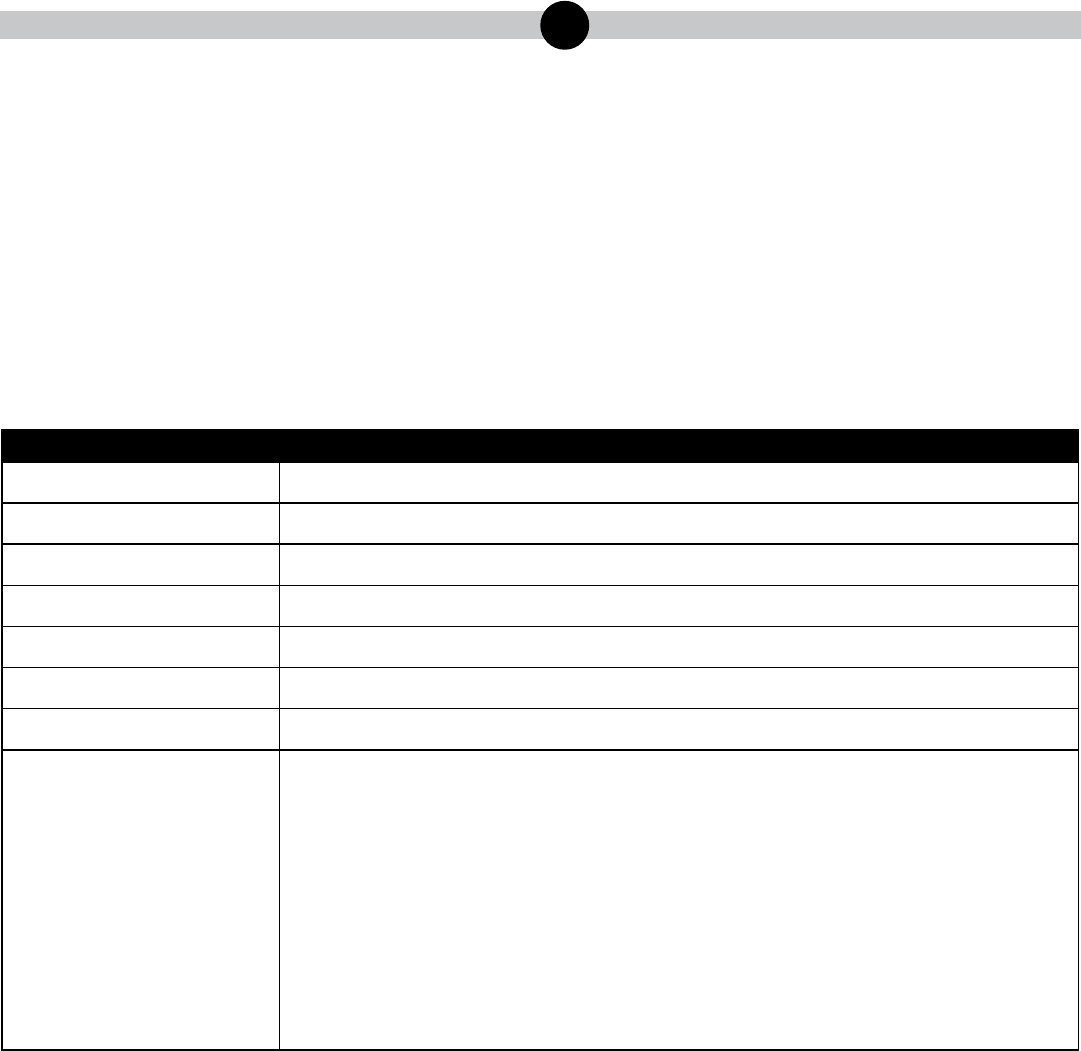
Pennsylvania Keystone Biology Item and Scoring Sampler—September 2021
53
2
BiologyMODULE2
8. Many scientists have concluded that whales and dolphins have a more recent common ancestor
than do whales and sharks. Which characteristic most likely allowed scientists to make this
conclusion?
A. species niche
B. predation behavior
C. anatomical structure
D. geographical distribution
642371642371
Item Information
Alignment BIO.B.3.2.1
Answer Key C
Depth of Knowledge 2
p-value A 16%
p-value B 15%
p-value C 59% (correct answer)
p-value D 10%
Option Annotations A. Studying species niche allows scientists to understand species’
ecological roles in relation to their habitat conditions, resources,
and interactions.
B. Studying predation behavior provides understanding related to
nutrition.
C. Key: Comparative anatomy has long been used to determine
common ancestry among organisms.
D. Whales, dolphins, and sharks share their environments with many
organisms; this is not sufficient information to determine common
ancestry.
6767

Pennsylvania Keystone Biology Item and Scoring Sampler—September 2021
54
2
BiologyMODULE2
9. Which set of ecological organization levels is most likely to contain the largest variety
of species?
A. multiple biomes in a biosphere
B. multiple ecosystems in a biome
C. multiple individuals in a population
D. multiple populations in a community
677882677882
Item Information
Alignment BIO.B.4.1.1
Answer Key A
Depth of Knowledge 2
p-value A 55% (correct answer)
p-value B 18%
p-value C 9%
p-value D 18%
Option Annotations A. Key: A biome is the most inclusive level of biological organization
within a biosphere and represents more variety than any other
ecological level.
B. Ecosystems are components of biomes within the biosphere.
C. Individuals within the same population are the same species.
D. Multiple populations represent less variety than that found in a
biome.
6767

Pennsylvania Keystone Biology Item and Scoring Sampler—September 2021
55
2
BiologyMODULE2
10. Tadpoles grown in ponds with high densities of tadpoles have lower survival and growth rates
than tadpoles grown in ponds with lower densities of tadpoles. Which interaction between
tadpoles grown in high-tadpole-density ponds would most likely cause the decreased survival
and growth rates?
A. symbiosis
B. mutualism
C. competition
D. commensalism
641202641202
Item Information
Alignment BIO.B.4.2.2
Answer Key C
Depth of Knowledge 2
p-value A 9%
p-value B 12%
p-value C 72% (correct answer)
p-value D 7%
Option Annotations A. Symbiosis describes either a beneficial or harmful relationship.
B. Mutualism is a type of symbiosis in which both organisms benefit.
C. Key: Tadpoles in low-density ponds have less competition for
resources.
D. Commensalism is a type of symbiosis in which one organism
benefits, and the other is unaffected.

Pennsylvania Keystone Biology Item and Scoring Sampler—September 2021
56
2
BiologyMODULE2
11. Ash from a volcanic eruption decreases the amount of available solar energy for a region.
Which statement describes how a decrease in available sunlight will most likely affect
ecosystems of this region?
A. Producer populations will decrease, causing a decrease in consumer populations.
B. Producer populations will decrease, causing an increase in consumer populations.
C. Decomposer populations will increase, causing a decrease in consumer populations.
D. Decomposer populations will increase, causing an increase in consumer populations.
683582683582
Item Information
Alignment BIO.B.4.2.5
Answer Key A
Depth of Knowledge 2
p-value A 75% (correct answer)
p-value B 10%
p-value C 11%
p-value D 4%
Option Annotations A. Key: Reduced sunlight will harm producers and consumers in the
ecosystem.
B. If producer populations decrease, consumer populations will also
decrease.
C. Decomposer populations do not directly affect consumer
populations.
D. Decomposer populations do not directly affect consumer
populations.
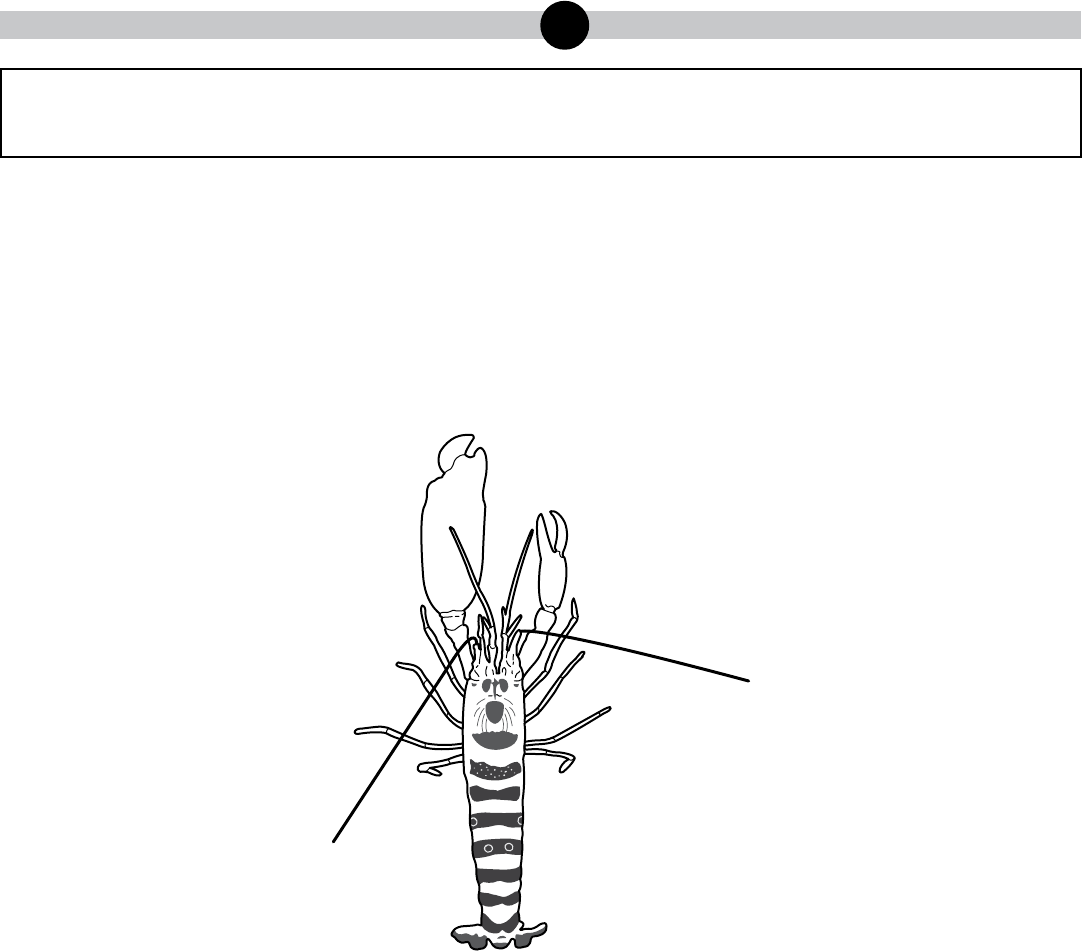
Pennsylvania Keystone Biology Item and Scoring Sampler—September 2021
57
2
BiologyMODULE2
Directions: Use the information presented on page 57 to answer questions12 and13.
A Stunning Adaptation
Pistol shrimp are a group of small crustaceans with one claw that is much larger than the other.
When pistol shrimp snap the larger claw shut, a sharp cracking sound is produced. A pistol shrimp
can use this sound to stun its prey, such as small fish. Some pistol shrimp even have pockets of
tissue that cover their eyes for protection from the sound waves. The drawing shows an example of
one species of pistol shrimp.
Pistol Shrimp
Scientists investigating this noise production have determined that it is not the snapping together
of the two sides of the claw that results in the loud sound. The process is far more complex.
As the two sides of the claw snap shut, a jet of water comes from the claw at a speed of up to
62milesperhour. The moving water forms a low-pressure bubble behind it. As the pressure around
the moving water stabilizes, the bubble pops, resulting in a loud bang.
108312108312

Pennsylvania Keystone Biology Item and Scoring Sampler—September 2021
58
2
BiologyMODULE2
12. A male pistol shrimp with protective eye tissue pockets mates with a female shrimp without
protective eye tissue pockets. All of the offspring have eye tissue pockets. Which statement is
the most likely conclusion that can be made about the eye tissue pocket trait in pistol shrimp?
A. It is a recessive, autosomal trait.
B. It is a dominant, autosomal trait.
C. It is a trait that results from multiple alleles.
D. It is a trait that results from incomplete dominance.
682198682198
Item Information
Alignment BIO.B.2.1.1
Answer Key B
Depth of Knowledge 2
p-value A 8%
p-value B 78% (correct answer)
p-value C 8%
p-value D 6%
Option Annotations A. This trait is dominant, not recessive.
B. Key: The eye tissue pocket trait is dominant and will result in
offspring with at least one allele for the trait.
C. A dominant trait will result in offspring with at least one allele for the
trait.
D. This trait has two forms; it does not produce a third phenotype.

Pennsylvania Keystone Biology Item and Scoring Sampler—September 2021
59
2
BiologyMODULE2
13. Some pistol shrimp within a population do not have eye tissue pockets. What role will natural
selection most likely have in the frequency of the alleles responsible for the presence of
tissue pockets in the shrimp population over time?
A. Natural selection will increase the allele frequency for tissue pockets because they are
beneficial to the shrimp.
B. Natural selection will decrease the allele frequency for tissue pockets because they are
beneficial to the shrimp.
C. Natural selection will not affect the allele frequency for tissue pockets because the trait is
only in a few organisms.
D. Natural selection will lead to the extinction of the shrimp species over time because the
tissue pockets could cause poor vision.
682196682196
Item Information
Alignment BIO.B.3.1.1
Answer Key A
Depth of Knowledge 2
p-value A 65% (correct answer)
p-value B 10%
p-value C 16%
p-value D 9%
Option Annotations A. Key: Beneficial traits will increase in allele frequency as organisms
with these traits successfully reproduce and pass the traits to
offspring.
B. Natural selection will increase the allele frequency of beneficial
traits.
C. Natural selection will increase the allele frequency of beneficial
traits.
D. Tissue pockets benefit shrimp by protecting their eyes.
677890677890

Pennsylvania Keystone Biology Item and Scoring Sampler—September 2021
60
2
BiologyMODULE2
CONSTRUCTED-RESPONSE ITEM
14. In the 1800s Gregor Mendel published a scientific paper based on pea plant
experiments. In the paper he made the following conclusion:
Traits have two possible forms, which are determined by the inheritance of two factors.
One factor is inherited from each parent. One form of the trait is dominant and the
other recessive. When the offspring inherit one or more dominant factors, they will
display that form of the trait.
Part A: Describe how one part of Mendel’s conclusion is consistent with current
scientific knowledge of inheritance.
Go to the next page to finish question 14.
GO ON

Pennsylvania Keystone Biology Item and Scoring Sampler—September 2021
61
2
BiologyMODULE2
14. Continued. Please refer to the previous page for task explanation.
Part B: Since Mendel’s paper was published, other forms of inheritance have been
discovered. Describe two examples of how Mendel’s conclusion does not
fully explain the current scientific understanding of inheritance.
Example 1 :
Example 2 :
700255700255
STOP
AFTER YOU HAVE CHECKED YOUR WORK, CLOSE YOUR ANSWER
BOOKLET AND TEST BOOKLET SO YOUR TEACHER WILL KNOW
YOU ARE FINISHED.

Pennsylvania Keystone Biology Item and Scoring Sampler—September 2021
62
2
BiologyMODULE2
SCORING GUIDE
#14 Item Information
Alignment BIO.B.2.1.1 Depth of Knowledge 3 Mean Score 1.26
Item-Specific Scoring Guideline
Score Description
3
The response demonstrates a thorough understanding of describing and/or predicting
observed patterns of inheritance by
• describing how one part of Mendel’s conclusions is consistent with current
scientific knowledge of inheritance, AND
• describing an example of how Mendel’s conclusions do not fully explain other
forms of inheritance that have been discovered, AND
• describing a second example of how Mendel’s conclusions do not fully explain
other forms of inheritance that have been discovered.
The response is clear, complete, and correct.
2
The response demonstrates a partial understanding of describing and/or predicting
observed patterns of inheritance by fulfilling two of the bullets. The response may
contain some work that is incomplete or unclear.
• Describing how one part of Mendel’s conclusions is consistent with current
scientific knowledge of inheritance
• Describing an example of how Mendel’s conclusions do not fully explain other
forms of inheritance that have been discovered
• Describing a second example of how Mendel’s conclusions do not fully explain
other forms of inheritance that have been discovered
1
The response demonstrates a minimal understanding of describing and/or predicting
observed patterns of inheritance by fulfilling one of the bullets. The response may
contain some work that is incomplete or unclear.
• Describing how one part of Mendel’s conclusions is consistent with current
scientific knowledge of inheritance
• Describing an example of how Mendel’s conclusions do not fully explain other
forms of inheritance that have been discovered
0
The response provides insufficient evidence to demonstrate any understanding of the
concept being tested.
Non-
scorables
B – No response written or refusal to respond
F – Foreign language
K – Off task
U – Unreadable
Note: No deductions should be taken for misspelled words or grammatical errors.

Pennsylvania Keystone Biology Item and Scoring Sampler—September 2021
63
2
BiologyMODULE2
Responses That Will Receive Credit
Part A (1 point):
• Mendel’s “factors” are what we now call “alleles.” We now know that alleles are found on
chromosomes and that, in each cell of an individual, one set of chromosomes is from the
mother and one set is from the father. So for each trait, an individual inherits one allele for
that trait from the mother and one from the father.
• We now know that meiosis occurs to make sex cells that have one set of chromosomes and
therefore one allele (or factor) for each trait. When the sex cells fuse in sexual reproduction,
the offspring has inherited one set of chromosomes from each parent and therefore one
allele for each trait from each parent.
• We know that a dominant trait is often caused by having an allele that codes for a protein
that is functional and a recessive trait is caused by having only recessive alleles that code
for a nonfunctional protein (or that are not transcribed).
Part B (2 points, 1 point for each of two examples):
• Traits that show incomplete dominance are not explained by Mendel’s conclusions.
In incomplete dominance, heterozygotes have a phenotype that is like a blend of the
“recessive” and “dominant” phenotypes (e.g., displays an intermediate coloration between
the dominant color and recessive color, such as red flower color, pink flower color, and
white flower color for a species of plant).
• Traits that show codominance are not explained by Mendel’s conclusions. In codominance,
heterozygotes have a phenotype that displays both the “recessive” and “dominant”
phenotypes (e.g., a black rooster and white hen have “checkered” offspring).
• In males, sex-linked traits are not determined by the inheritance of two factors, since they
have only one X chromosome, which they inherit from their mother.
• Some traits have more than two possible forms because there are more than two possible
alleles that affect that trait. This is “multiple allele” inheritance, and examples are blood type
(in the ABO blood group system) and feather color in pigeons.
• Some traits are caused by more than one gene and have several possible phenotypes.
These are polygenic traits (or quantitative characters). Examples are eye color, hair color,
skin color, height, etc.
• Some traits are primarily determined by one gene, but can be affected by a second gene.
So the phenotype is determined by the genotypes of both genes. This is called epistasis.
For example, B_C_ mice are gray, bbC_ mice are brown, and B_cc and bbcc mice are
white.
• Some traits are caused by a chromosomal abnormality or chromosomal mutation, in which
a chromosome or section of a chromosome is either missing or there is an extra copy.
These traits are not caused by only two alleles.
• Some traits are affected by environment and genes, so the phenotype is not solely
dependent on the genotype. In these cases, the phenotype is affected by diet or exposure
to sunlight or soil pH, etc.

Pennsylvania Keystone Biology Item and Scoring Sampler—September 2021
64
2
BiologyMODULE2
Background Information:
• Mendel’s “factors” are the same as alleles, which are the possible forms of a gene.
• A “phenotype” is effectively a trait or characteristic.
• The genotype is the alleles an individual has for a gene.
• Heterozygotes have one dominant allele and one recessive allele, or two different alleles for
a trait. Homozygotes have two of the same alleles.
• To receive credit in Part B, students do not need to provide real-world examples of the
described differences between Mendel’s conclusion and current scientific understandings
of inheritance.

Pennsylvania Keystone Biology Item and Scoring Sampler—September 2021
65
THIS PAGE IS
INTENTIONALLY BLANK.
2
BiologyMODULE2

Pennsylvania Keystone Biology Item and Scoring Sampler—September 2021
66
2
BiologyMODULE2
STUDENT RESPONSE
Response Score: 3 points
14. In the 1800s Gregor Mendel published a scientific paper based on pea plant
experiments. In the paper he made the following conclusion:
Traits have two possible forms, which are determined by the inheritance of two factors.
One factor is inherited from each parent. One form of the trait is dominant and the
other recessive. When the offspring inherit one or more dominant factors, they will
display that form of the trait.
Part A: Describe how one part of Mendel’s conclusion is consistent with current
scientific knowledge of inheritance.
Go to the next page to finish question 14.
GO ON
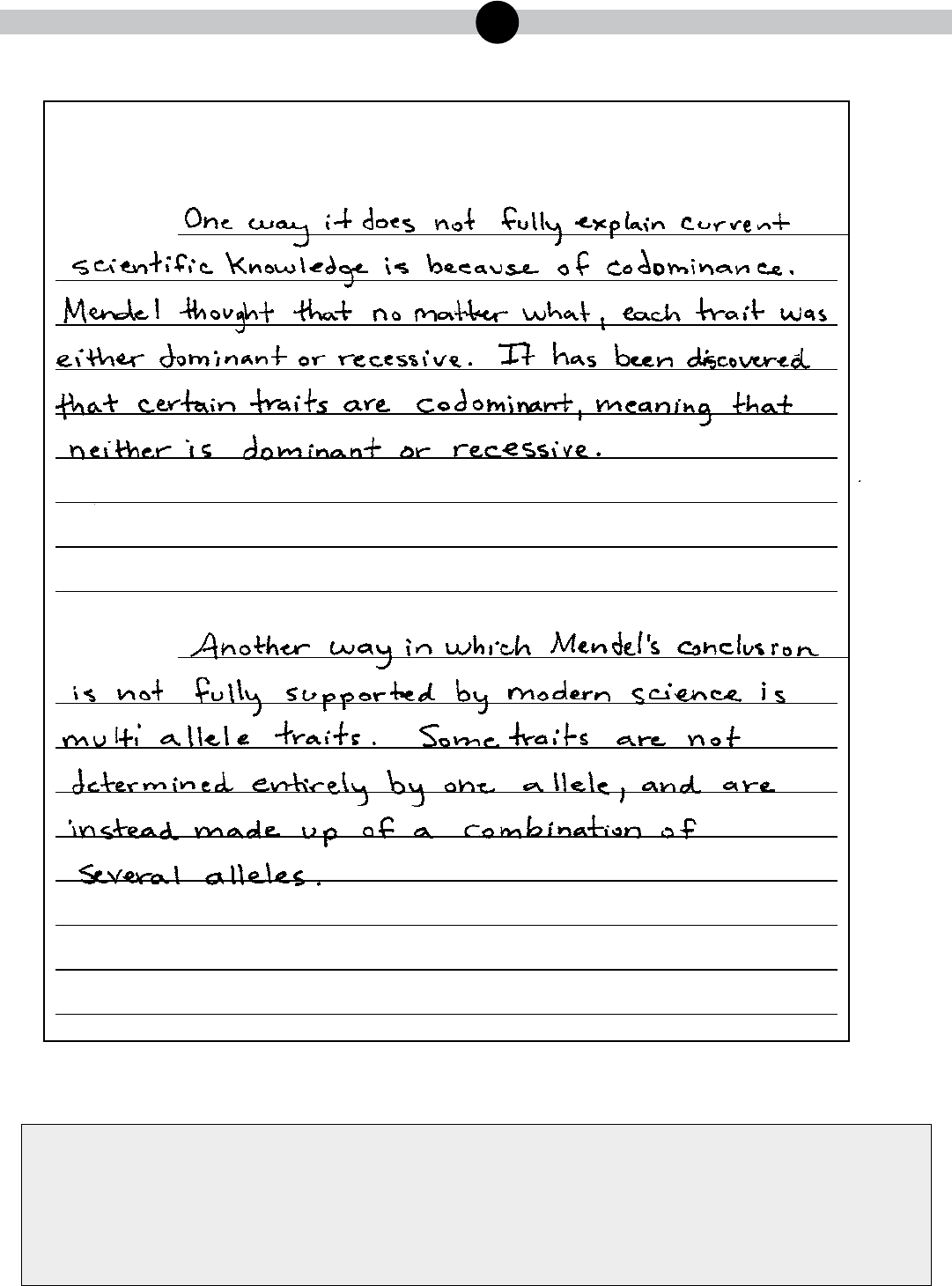
Pennsylvania Keystone Biology Item and Scoring Sampler—September 2021
67
2
BiologyMODULE2
14. Continued. Please refer to the previous page for task explanation.
Part B: Since Mendel’s paper was published, other forms of inheritance have been
discovered. Describe two examples of how Mendel’s conclusion does not
fully explain the current scientific understanding of inheritance.
Example 1 :
Example 2 :
STOP
AFTER YOU HAVE CHECKED YOUR WORK, CLOSE YOUR ANSWER
BOOKLET AND TEST BOOKLET SO YOUR TEACHER WILL KNOW
YOU ARE FINISHED.
The response demonstrates a thorough understanding of describing and/or predicting observed patterns of
inheritance. In Part A, the response correctly describes how one part of Mendel’s conclusions is consistent with
current scientific knowledge of inheritance: “...many traits are determined by alleles ...” In Part B, the response
correctly describes two examples of how Mendel’s conclusions do not fully explain other forms of inheritance
that have been discovered. Example 1: “... certain traits are codominant, meaning that neither is dominant
or recessive.” Example 2: “... multi allele traits. Some traits are not determined entirely by one allele, and are
instead made up of a combination of several alleles.” The response is clear, complete, and correct.

Pennsylvania Keystone Biology Item and Scoring Sampler—September 2021
68
2
BiologyMODULE2
STUDENT RESPONSE
Response Score: 2 points
Part A
Question 14
Page 1 of 2

Pennsylvania Keystone Biology Item and Scoring Sampler—September 2021
69
2
BiologyMODULE2
STUDENT RESPONSE
Part B
Question 14
Page 2 of 2
The response demonstrates a partial understanding of describing and/or predicting observed patterns of inheritance. In PartA,
the response correctly describes how one part of Mendel’s conclusions is consistent with current scientific knowledge of
inheritance: “... organisms today inherit alleles from both their parents.” In Part B, the response correctly describes only one
example of how Mendel’s conclusions do not fully explain other forms of inheritance that have been discovered. Example 1:
“Genetic mutations can occur causing a new trait that neither parent carried.” Example 2 for Part B is not acceptable and does
not receive any credit. The response contains some work that is incomplete or unclear.

Pennsylvania Keystone Biology Item and Scoring Sampler—September 2021
70
2
BiologyMODULE2
STUDENT RESPONSE
Response Score: 1 point
14. In the 1800s Gregor Mendel published a scientific paper based on pea plant
experiments. In the paper he made the following conclusion:
Traits have two possible forms, which are determined by the inheritance of two factors.
One factor is inherited from each parent. One form of the trait is dominant and the
other recessive. When the offspring inherit one or more dominant factors, they will
display that form of the trait.
Part A: Describe how one part of Mendel’s conclusion is consistent with current
scientific knowledge of inheritance.
Go to the next page to finish question 14.
GO ON

Pennsylvania Keystone Biology Item and Scoring Sampler—September 2021
71
2
BiologyMODULE2
14. Continued. Please refer to the previous page for task explanation.
Part B: Since Mendel’s paper was published, other forms of inheritance have been
discovered. Describe two examples of how Mendel’s conclusion does not
fully explain the current scientific understanding of inheritance.
Example 1 :
Example 2 :
STOP
AFTER YOU HAVE CHECKED YOUR WORK, CLOSE YOUR ANSWER
BOOKLET AND TEST BOOKLET SO YOUR TEACHER WILL KNOW
YOU ARE FINISHED.
The response demonstrates a minimal understanding of describing and/or predicting observed patterns of
inheritance. In Part A, the response correctly describes how one part of Mendel’s conclusions is consistent with
current scientific knowledge of inheritance: “When we are born we inherit two factors, one from each parent”
AND “When we get the dominant factors, we will display that trait.” Either is correct for credit in Part A. In
PartB, the response does not describe any correct examples of how Mendel’s conclusions do not fully explain
other forms of inheritance that have been discovered. Example 2 “Don’t always display that trait” needs more
description for credit. Neither example receives any credit. The response contains some work that is incomplete
or unclear.

Pennsylvania Keystone Biology Item and Scoring Sampler—September 2021
72
2
BiologyMODULE2
STUDENT RESPONSE
Response Score: 0 points
Part A
Question 14
Page 1 of 2

Pennsylvania Keystone Biology Item and Scoring Sampler—September 2021
73
2
BiologyMODULE2
STUDENT RESPONSE
Part B
Question 14
Page 2 of 2
The response provides insufficient evidence to demonstrate any understanding of describing and/or predicting observed patterns
of inheritance. In Part A, the response does not correctly describe how one part of Mendel’s conclusions is consistent with
current scientific knowledge of inheritance and does not receive any credit. In Part B, the response does not describe any correct
examples of how Mendel’s conclusions do not fully explain other forms of inheritance that have been discovered. Both examples
provided are incorrect and do not receive any credit. The response contains work that is incomplete or unclear.

Pennsylvania Keystone Biology Item and Scoring Sampler—September 2021
74
2
BiologyMODULE2
CONSTRUCTED-RESPONSE ITEM
15. New technologies can extract certain oils from plants to make renewable biodiesel fuel.
Scientists have altered the genome of a species of plant to increase the amount of this
oil that each plant produces. To do this, scientists activated a gene that directs cells to
store plant oils. To further increase the amount of plant oil produced, scientists are
planning to duplicate the gene that codes for oil production.
Part A: Describe how the altering of the plant’s genome by the scientists is similar
to naturally occurring genetic mutations.
Part B: Explain how this process could impact agriculture in the United States.
Go to the next page to finish question 15.
GO ON

Pennsylvania Keystone Biology Item and Scoring Sampler—September 2021
75
2
BiologyMODULE2
15. Continued. Please refer to the previous page for task explanation.
Part C: Explain how altering the genome of a species has impacted the field of
medicine.
STOP
AFTER YOU HAVE CHECKED YOUR WORK, CLOSE YOUR ANSWER
BOOKLET AND TEST BOOKLET SO YOUR TEACHER WILL KNOW
YOU ARE FINISHED.

Pennsylvania Keystone Biology Item and Scoring Sampler—September 2021
76
2
BiologyMODULE2
SCORING GUIDE
#15 Item Information
Alignment BIO.B.2.4.1 Depth of Knowledge 3 Mean Score 1.26
Item-Specific Scoring Guideline
Score Description
3
The response demonstrates a thorough understanding of how genetic engineering has
impacted the fields of medicine, forensics, and agriculture by completing all three of
the following tasks:
• Describing how the altering of the plant’s genome by the scientists is similar to
naturally occurring genetic mutations
• Explaining how this process could impact agriculture in the United States
• Explaining how altering the genome of a species could impact the field of
medicine
The response is clear, complete, and correct.
2
The response demonstrates a partial understanding of how genetic engineering has
impacted the fields of medicine, forensics, and agriculture by completing two of the
three tasks listed under the 3-point response.
The response may contain some work that is incomplete or unclear.
1
The response demonstrates a minimal understanding of how genetic engineering has
impacted the fields of medicine, forensics, and agriculture by completing one of the
three tasks listed under the 3-point response.
The response may contain some work that is incomplete or unclear.
0
The response provides insufficient evidence to demonstrate any understanding of the
concept being tested.
Non-
scorables
B – No response written or refusal to respond
F – Foreign language
K – Off task
U – Unreadable
Note: No deductions should be taken for misspelled words or grammatical errors.

Pennsylvania Keystone Biology Item and Scoring Sampler—September 2021
77
2
BiologyMODULE2
Responses That Will Receive Credit
Part A (1 point):
• The naturally occurring mutation could cause a similar effect as the scientific duplicating of
a gene.
• The scientists’ plan to alter the plant’s gene uses a naturally occurring type of mutation.
Part B (1 point):
• This process could impact agriculture by reducing the demand for fossil fuels. Currently,
fossil fuels are used extensively in agriculture, but if plants produce oil on a large scale, then
the agricultural industry becomes more sustainable in terms of its fuel use.
• This process could impact agriculture in the United States by improving agricultural profits
by giving farmers an additional way to earn revenue, from the plant oils and from the food
products being grown.
• This process could impact agriculture by increasing the amount of land devoted to
agriculture in order to produce more of this plant-based oil.
• Or any other scientifically sound impact to agriculture
Part C (1 point):
• It allows for more treatment options for genetic disorders using techniques like gene
therapy.
• Altering the genome of a species has impacted the field of medicine by giving scientists
and researchers the additional experience and expertise in genetics that might allow for
continued medical therapies for genetic disorders in humans or animals.
• Being able to modify the genetic code of an embryo to prevent the development of
genetically inherited conditions
• Or any other scientifically sound impact on the field of medicine
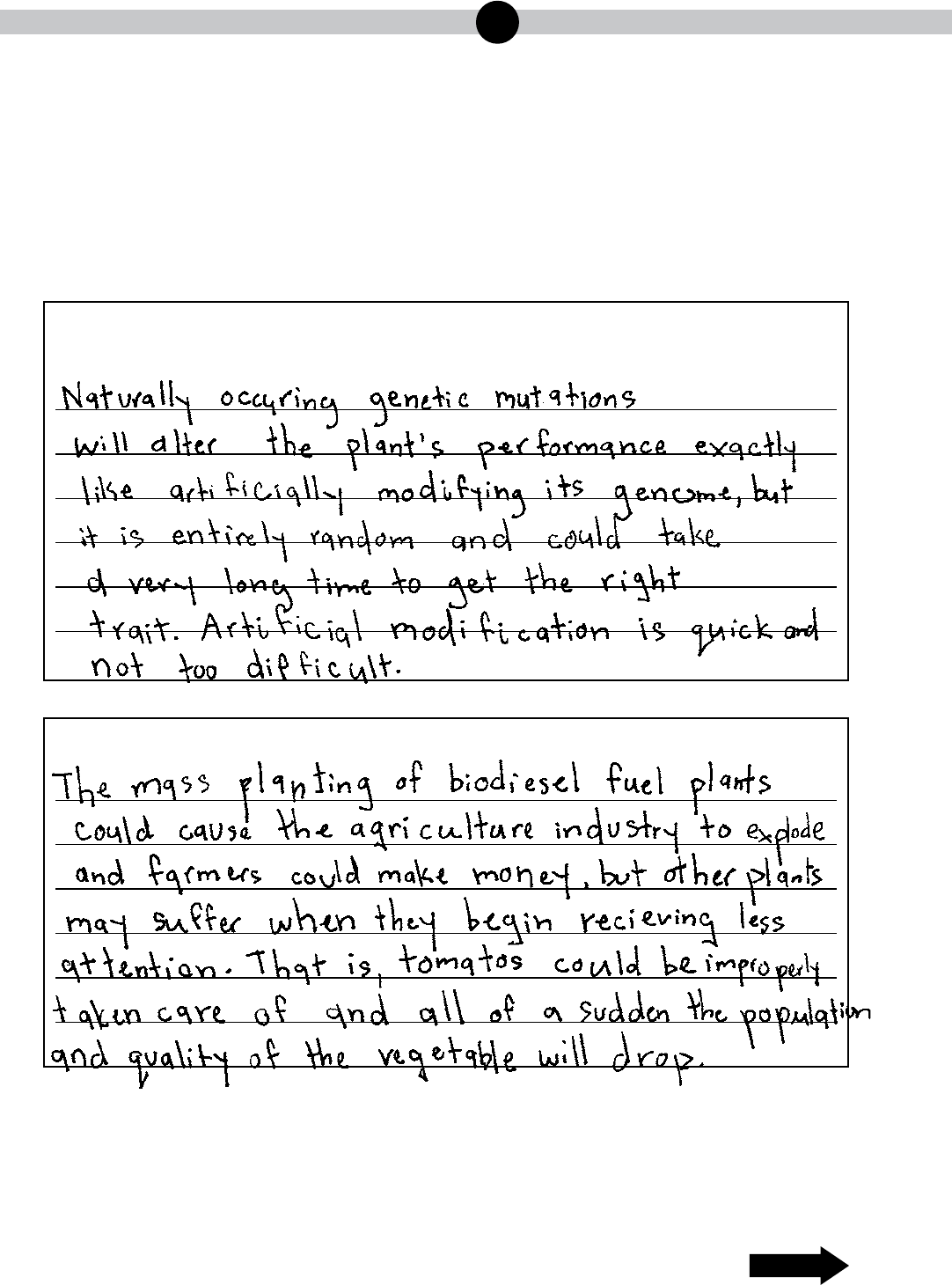
Pennsylvania Keystone Biology Item and Scoring Sampler—September 2021
78
2
BiologyMODULE2
STUDENT RESPONSE
Response Score: 3 points
15. New technologies can extract certain oils from plants to make renewable biodiesel fuel.
Scientists have altered the genome of a species of plant to increase the amount of this
oil that each plant produces. To do this, scientists activated a gene that directs cells to
store plant oils. To further increase the amount of plant oil produced, scientists are
planning to duplicate the gene that codes for oil production.
Part A: Describe how the altering of the plant’s genome by the scientists is similar
to naturally occurring genetic mutations.
Part B: Explain how this process could impact agriculture in the United States.
Go to the next page to finish question 15.
GO ON
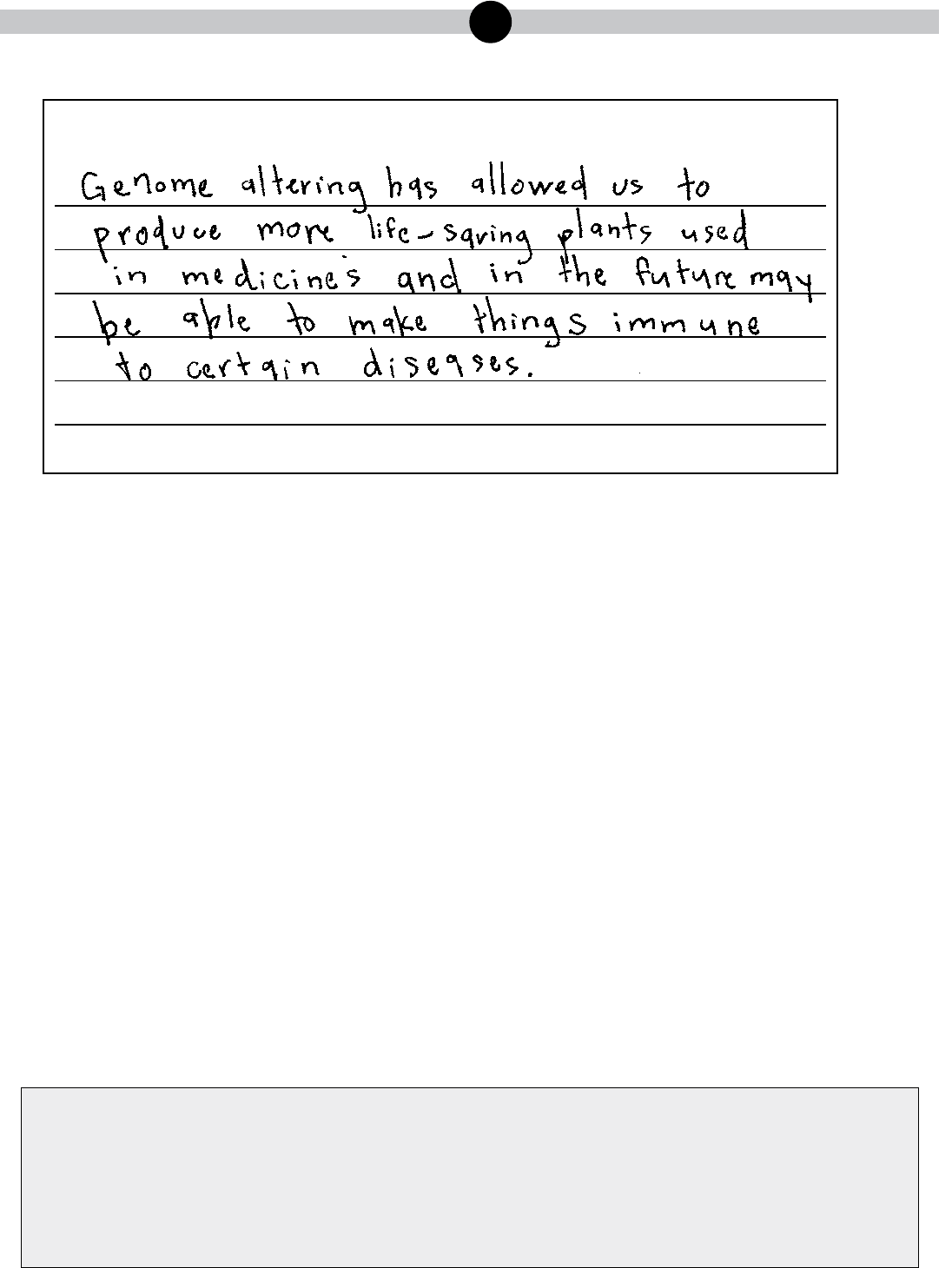
Pennsylvania Keystone Biology Item and Scoring Sampler—September 2021
79
2
BiologyMODULE2
15. Continued. Please refer to the previous page for task explanation.
Part C: Explain how altering the genome of a species has impacted the field of
medicine.
STOP
AFTER YOU HAVE CHECKED YOUR WORK, CLOSE YOUR ANSWER
BOOKLET AND TEST BOOKLET SO YOUR TEACHER WILL KNOW
YOU ARE FINISHED.
The response demonstrates a thorough understanding of how genetic engineering has impacted the fields of
medicine, forensics, and agriculture by completing all three tasks. The response correctly describes how the
altering of the plant’s genome by the scientists is similar to naturally occurring genetic mutations (“Naturally
occuring genetic mutations will alter the plant’s performance exactly like artificially modifying its genome”) and
correctly explains how this process could impact agriculture in the United States (“cause the agriculture industry
to explode and farmers could make money”). The response also correctly explains how altering the genome of a
species could impact the field of medicine (“genome altering has allowed us to produce more life-saving plants
used in medicines”). The response is clear, complete, and correct.

Pennsylvania Keystone Biology Item and Scoring Sampler—September 2021
80
2
BiologyMODULE2
STUDENT RESPONSE
Response Score: 2 points
15. New technologies can extract certain oils from plants to make renewable biodiesel fuel.
Scientists have altered the genome of a species of plant to increase the amount of this
oil that each plant produces. To do this, scientists activated a gene that directs cells to
store plant oils. To further increase the amount of plant oil produced, scientists are
planning to duplicate the gene that codes for oil production.
Part A: Describe how the altering of the plant’s genome by the scientists is similar
to naturally occurring genetic mutations.
Part B: Explain how this process could impact agriculture in the United States.
Go to the next page to finish question 15.
GO ON

Pennsylvania Keystone Biology Item and Scoring Sampler—September 2021
81
2
BiologyMODULE2
15. Continued. Please refer to the previous page for task explanation.
Part C: Explain how altering the genome of a species has impacted the field of
medicine.
STOP
AFTER YOU HAVE CHECKED YOUR WORK, CLOSE YOUR ANSWER
BOOKLET AND TEST BOOKLET SO YOUR TEACHER WILL KNOW
YOU ARE FINISHED.
The response demonstrates a partial understanding of how genetic engineering has impacted the fields of
medicine, forensics, and agriculture by completing two of the tasks. The response (“the plant could have
experienced this alteration in its natural environment from some sort of drastic change”) does not completely
describe how the altering of the plant’s genome by the scientists is similar to naturally occurring genetic
mutations. The response correctly explains how the process could impact agriculture in the United States
(“produce more farming jobs”) and correctly explains how altering the genome of a species could impact the
field of medicine (“plant that produces a specific chemical . . . altered to make it produce more of that specific
chemical”). The response contains some work that is incomplete or unclear.
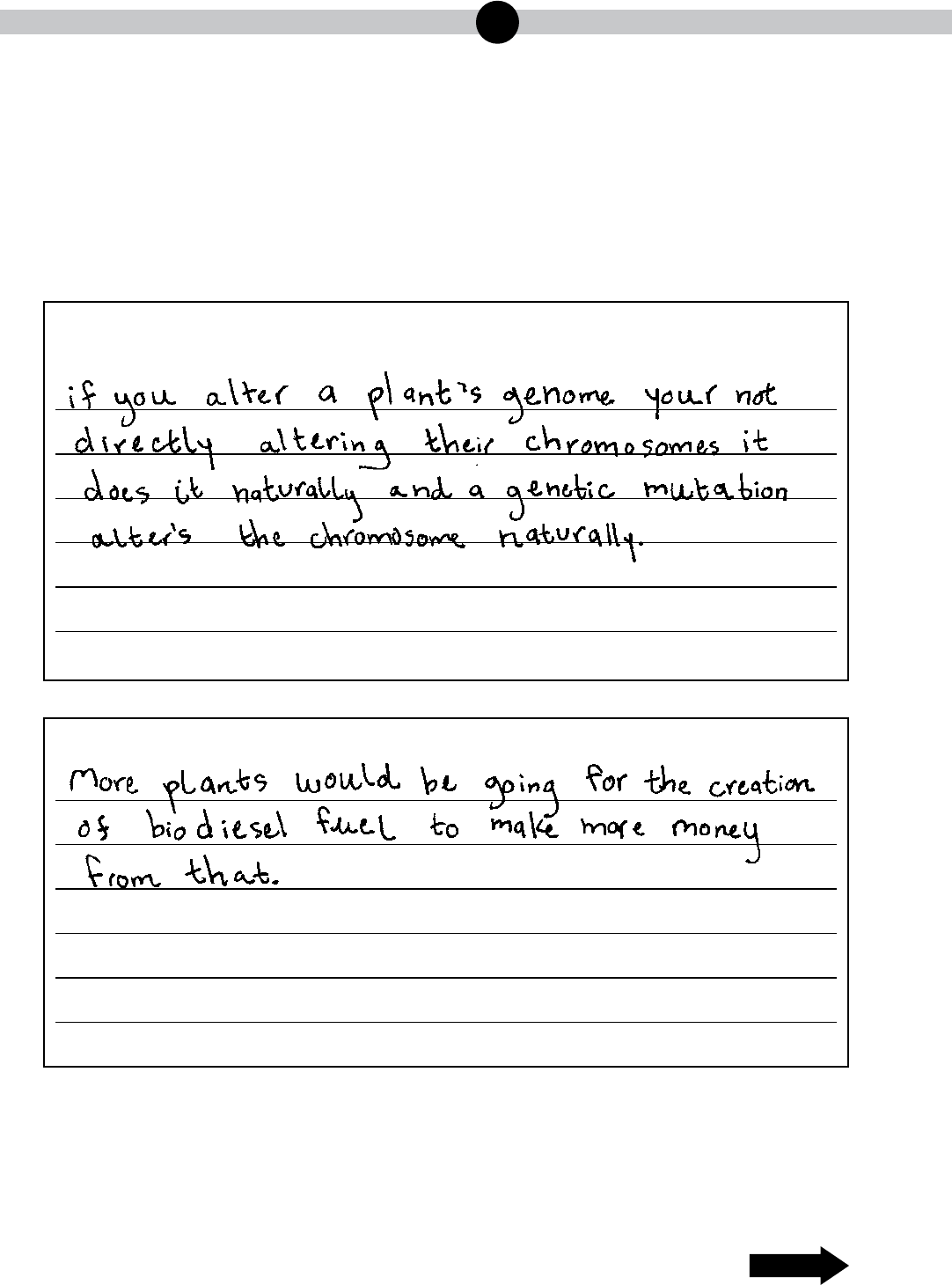
Pennsylvania Keystone Biology Item and Scoring Sampler—September 2021
82
2
BiologyMODULE2
STUDENT RESPONSE
Response Score: 1 point
15. New technologies can extract certain oils from plants to make renewable biodiesel fuel.
Scientists have altered the genome of a species of plant to increase the amount of this
oil that each plant produces. To do this, scientists activated a gene that directs cells to
store plant oils. To further increase the amount of plant oil produced, scientists are
planning to duplicate the gene that codes for oil production.
Part A: Describe how the altering of the plant’s genome by the scientists is similar
to naturally occurring genetic mutations.
Part B: Explain how this process could impact agriculture in the United States.
Go to the next page to finish question 15.
GO ON
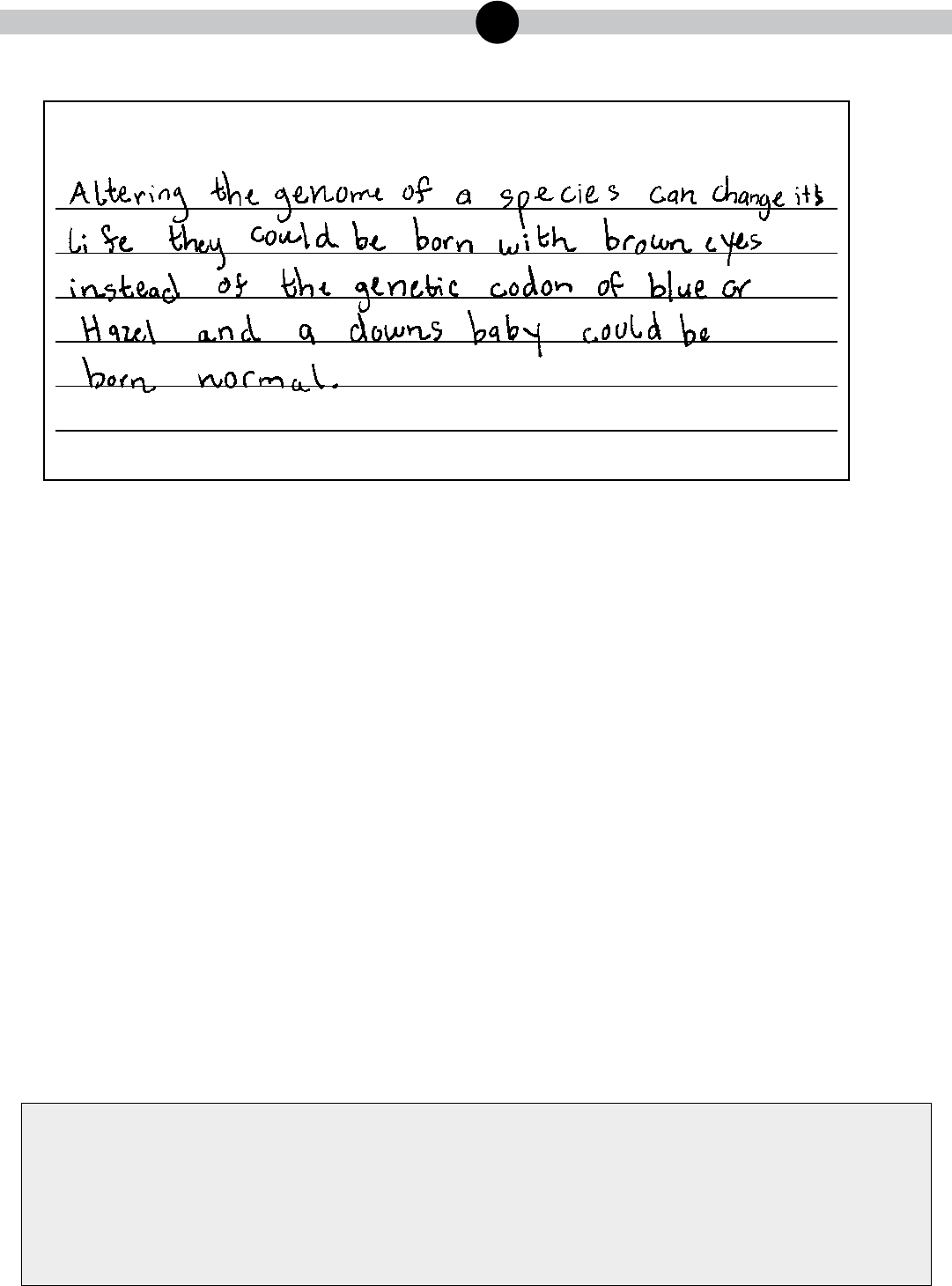
Pennsylvania Keystone Biology Item and Scoring Sampler—September 2021
83
2
BiologyMODULE2
15. Continued. Please refer to the previous page for task explanation.
Part C: Explain how altering the genome of a species has impacted the field of
medicine.
STOP
AFTER YOU HAVE CHECKED YOUR WORK, CLOSE YOUR ANSWER
BOOKLET AND TEST BOOKLET SO YOUR TEACHER WILL KNOW
YOU ARE FINISHED.
The response demonstrates a minimal understanding of how genetic engineering has impacted the fields of
medicine, forensics, and agriculture by completing one of the tasks. The description of altering the plant’s
chromosomes in PartA does not correctly describe how the altering of the plant’s genome by the scientists is
similar to naturally occurring genetic mutations. The response (“more plants . . . make more money from that”)
in Part B correctly explains how the process could impact agriculture in the United States, but the response in
Part C (“could be born with brown eyes instead of. . . blue or Hazel”) does not correctly explain how altering
the genome of a species could impact the field of medicine. The response contains work that is incomplete or
unclear.
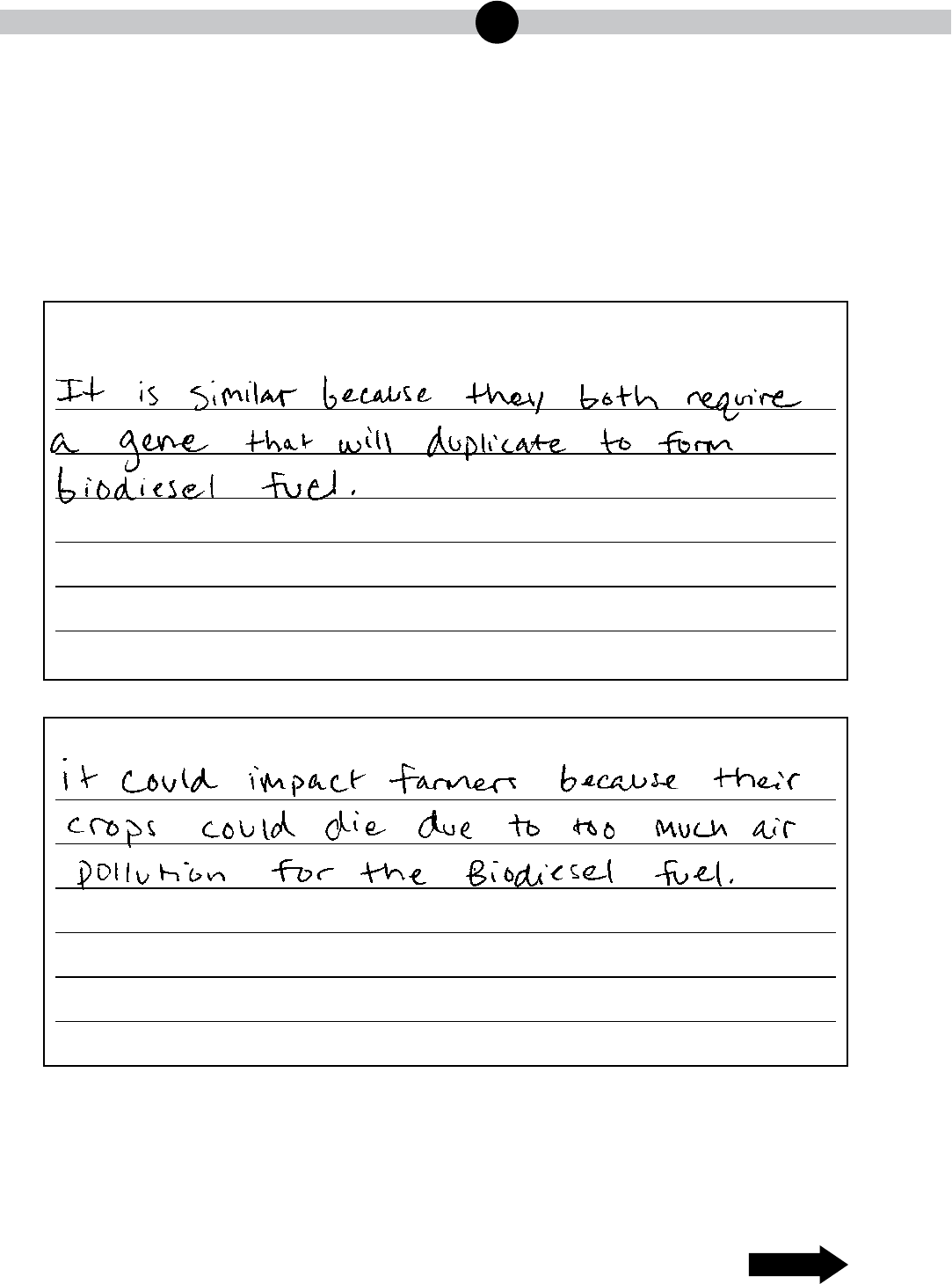
Pennsylvania Keystone Biology Item and Scoring Sampler—September 2021
84
2
BiologyMODULE2
STUDENT RESPONSE
Response Score: 0 points
15. New technologies can extract certain oils from plants to make renewable biodiesel fuel.
Scientists have altered the genome of a species of plant to increase the amount of this
oil that each plant produces. To do this, scientists activated a gene that directs cells to
store plant oils. To further increase the amount of plant oil produced, scientists are
planning to duplicate the gene that codes for oil production.
Part A: Describe how the altering of the plant’s genome by the scientists is similar
to naturally occurring genetic mutations.
Part B: Explain how this process could impact agriculture in the United States.
Go to the next page to finish question 15.
GO ON

Pennsylvania Keystone Biology Item and Scoring Sampler—September 2021
85
2
BiologyMODULE2
15. Continued. Please refer to the previous page for task explanation.
Part C: Explain how altering the genome of a species has impacted the field of
medicine.
STOP
AFTER YOU HAVE CHECKED YOUR WORK, CLOSE YOUR ANSWER
BOOKLET AND TEST BOOKLET SO YOUR TEACHER WILL KNOW
YOU ARE FINISHED.
The response provides insufficient evidence to demonstrate any understanding of how genetic engineering
has impacted the fields of medicine, forensics, and agriculture. The response (“they both require a gene that
will duplicate to form biodiesel fuel”) does not correctly describe how the altering of the plant’s genome by the
scientists is similar to naturally occurring genetic mutations. The response (“crops could die due to too much
air pollution”) in Part B does not clearly explain how the process could impact agriculture in the United States,
and the response in Part C (“doctors are writing more and more prescriptions”) does not completely explain how
altering the genome of a species could impact the field of medicine.
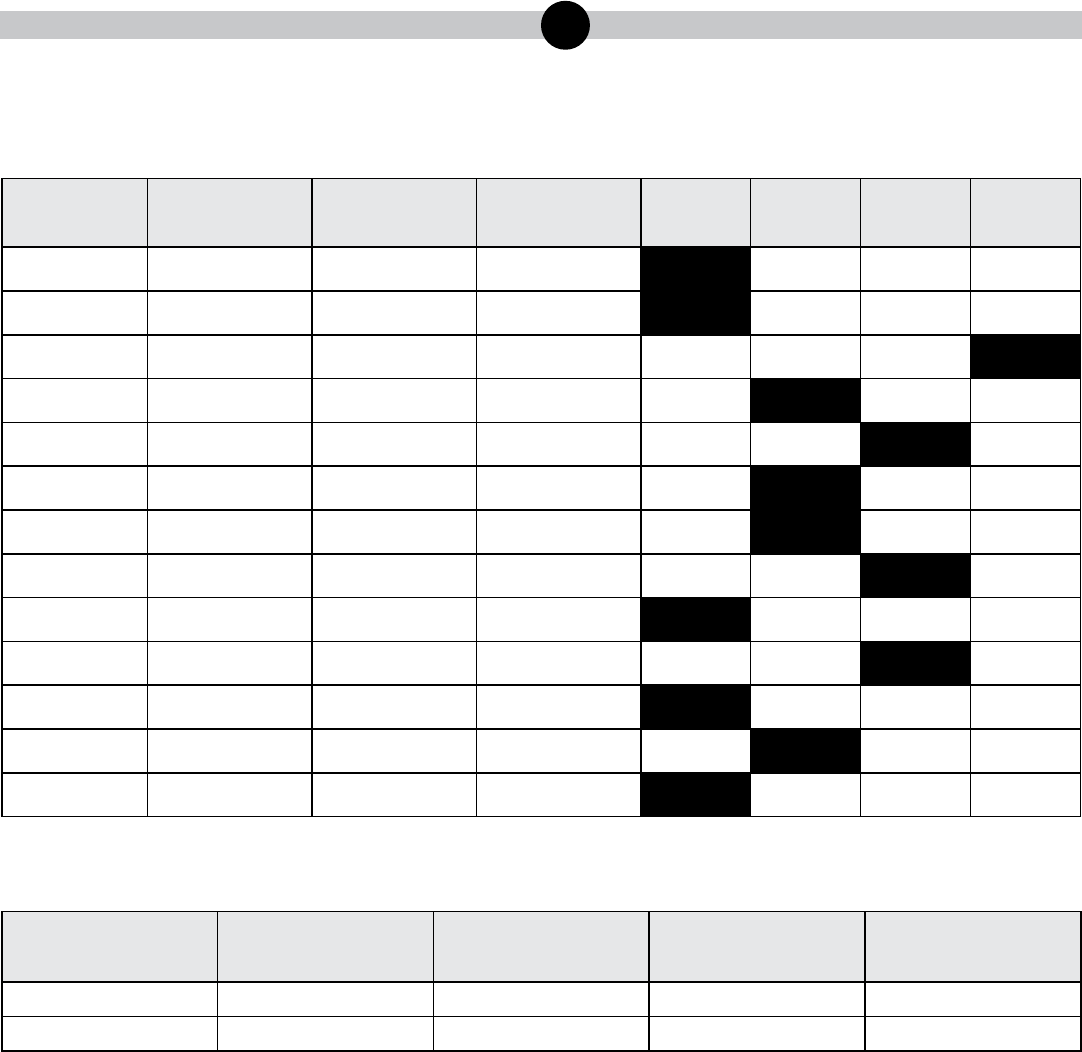
Pennsylvania Keystone Biology Item and Scoring Sampler—September 2021
86
2
BiologyMODULE2
BIOLOGY MODULE 2—SUMMARY DATA
MULTIPLE-CHOICE
Sample
Number
Alignment Answer Key
Depth of
Knowledge
p-value
A
p-value
B
p-value
C
p-value
D
1 BIO.B.1.1.1 A 2 48% 13% 25% 14%
2 BIO.B.1.1.2 A 2 43% 16% 16% 25%
3 BIO.B.1.2.2 D 2 7% 20% 18% 55%
4 BIO.B.2.1.2 B 2 17% 46% 13% 24%
5 BIO.B.2.2.1 C 2 19% 13% 40% 28%
6 BIO.B.3.1.2 B 2 11% 59% 12% 18%
7 BIO.B.3.1.3 B 2 14% 63% 12% 11%
8 BIO.B.3.2.1 C 2 16% 15% 59% 10%
9 BIO.B.4.1.1 A 2 55% 18% 9% 18%
10 BIO.B.4.2.2 C 2 9% 12% 72% 7%
11 BIO.B.4.2.5 A 2 75% 10% 11% 4%
12 (P) BIO.B.2.1.1 B 2 8% 78% 8% 6%
13 (P) BIO.B.3.1.1 A 2 65% 10% 16% 9%
CONSTRUCTED-RESPONSE
Sample
Number
Alignment Points
Depth of
Knowledge
Mean Score
14 BIO.B.2.1.1 3 3 1.26
15 BIO.B.2.4.1 3 3 1.26

Pennsylvania Keystone Biology Item and Scoring Sampler—September 2021
87
THIS PAGE IS
INTENTIONALLY BLANK.

Copyright © 2021 by the Pennsylvania Department of Education. The materials contained in
this publication may be duplicated by Pennsylvania educators for local classroom use. This
permission does not extend to the duplication of materials for commercial use.
Keystone Exams
Biology
Item and Scoring Sampler 2021
